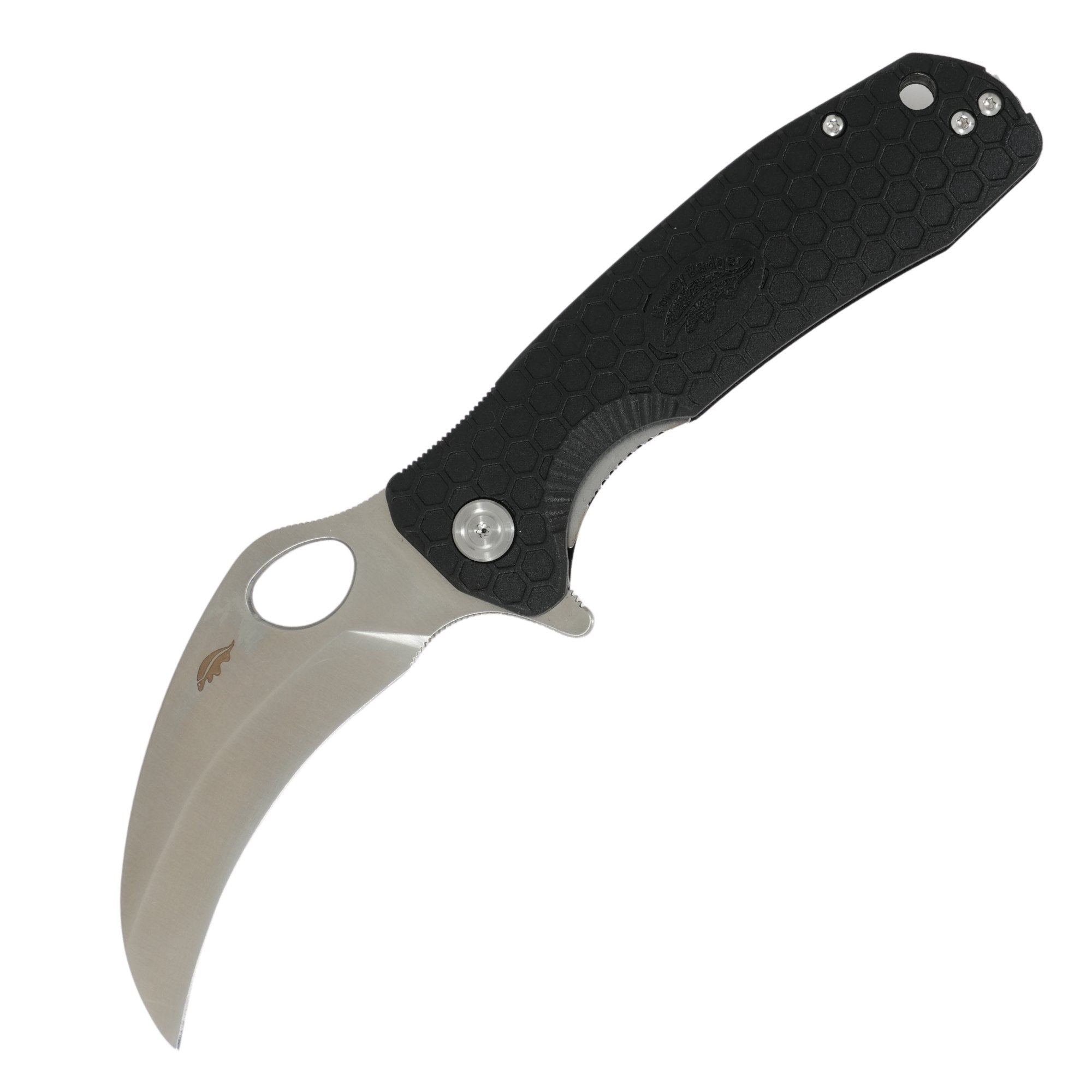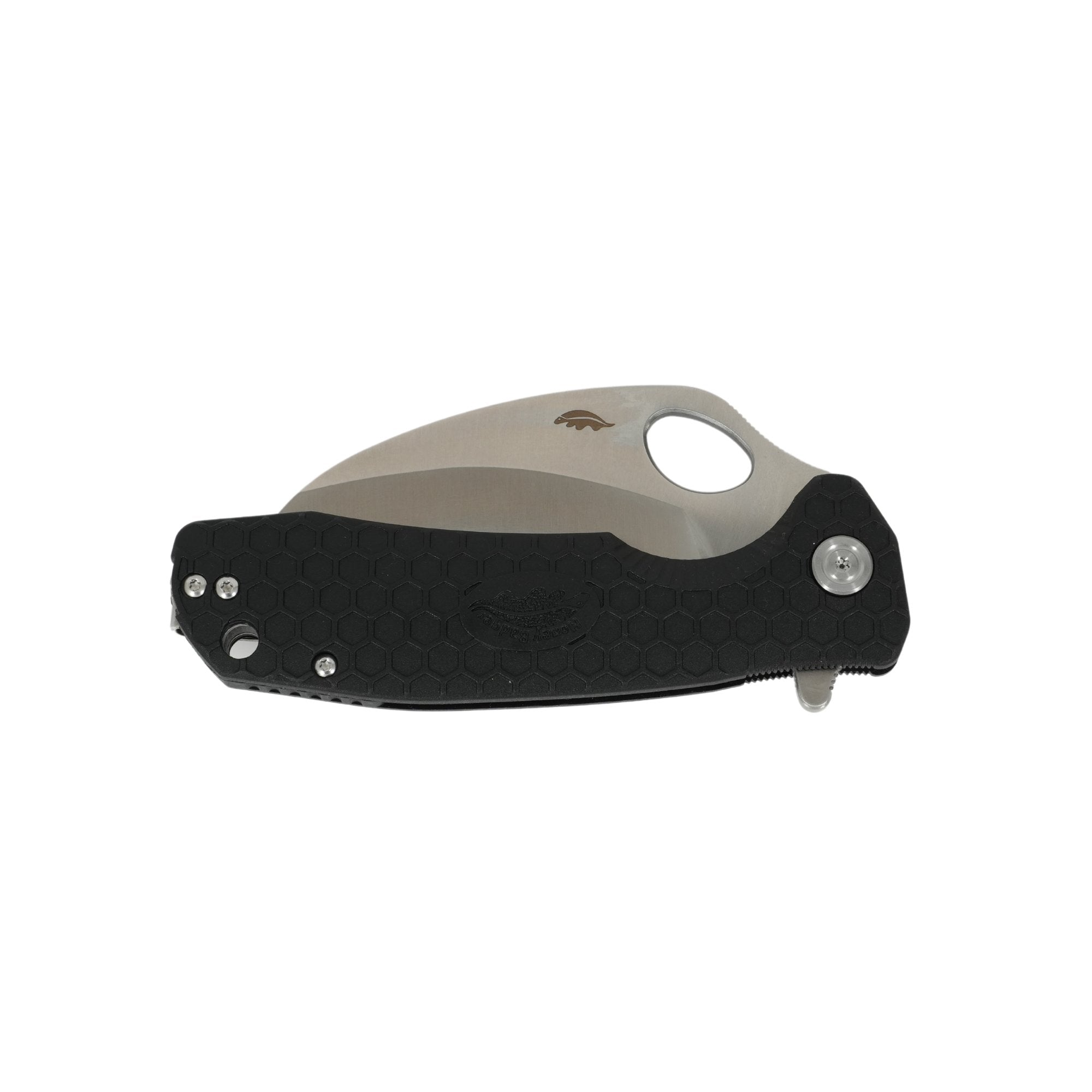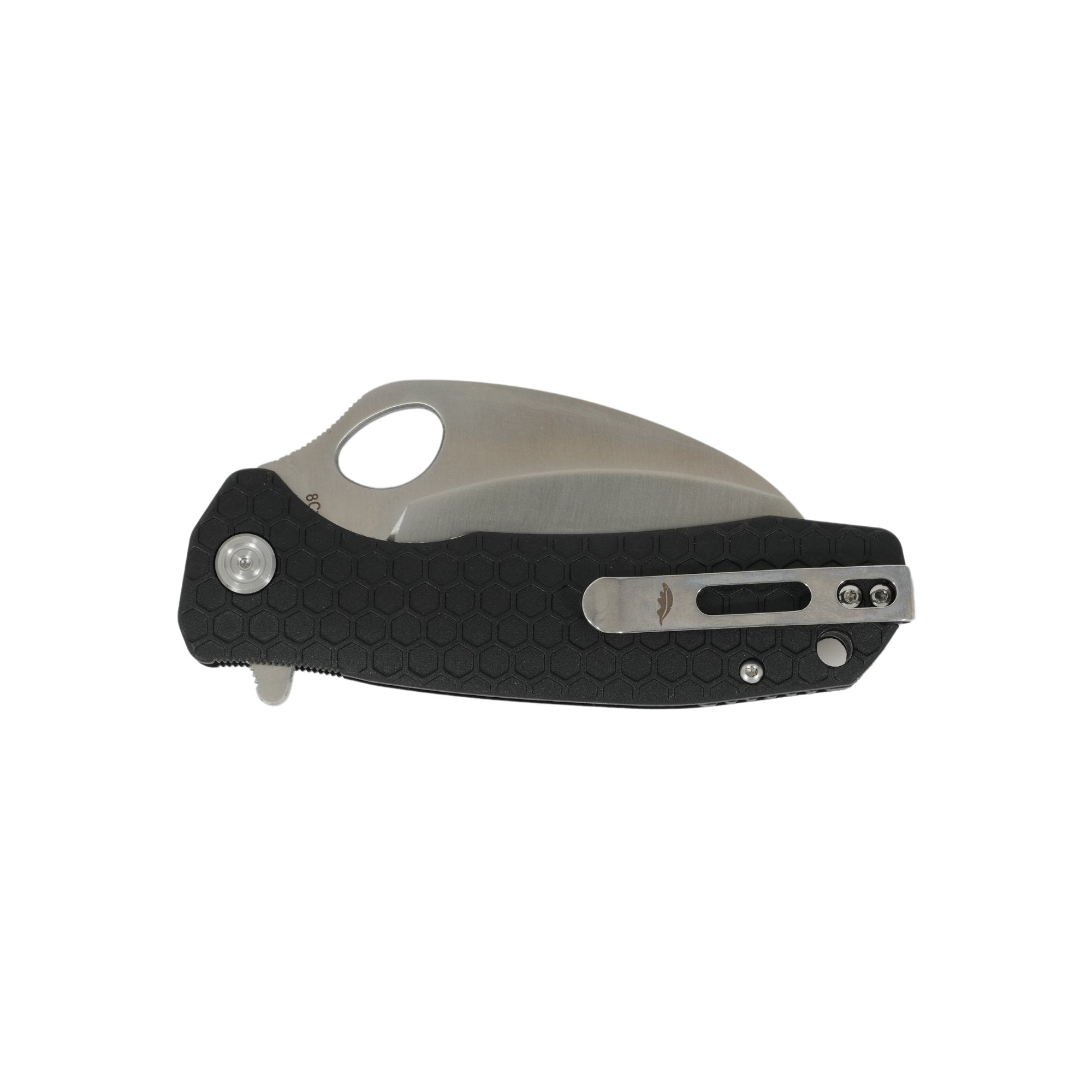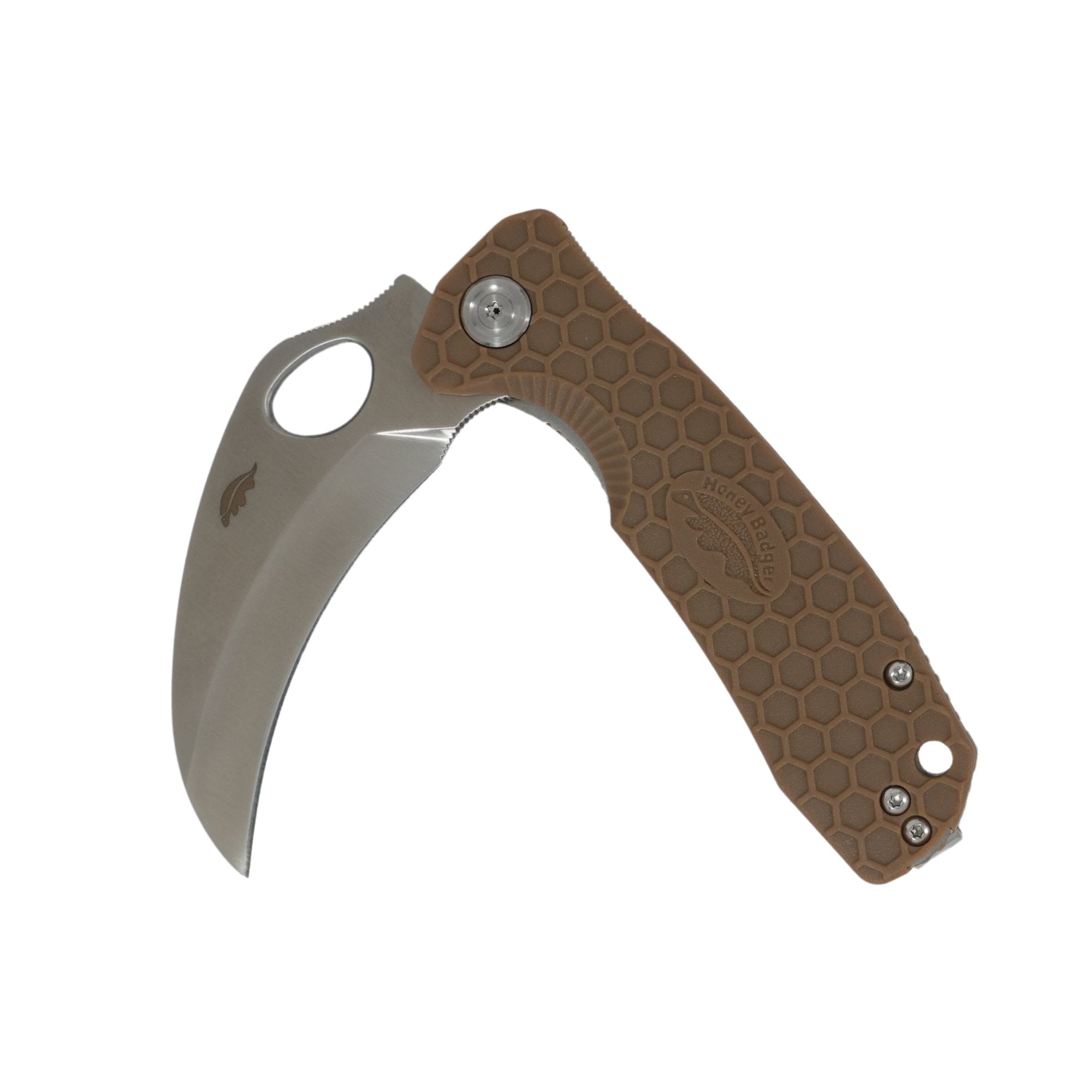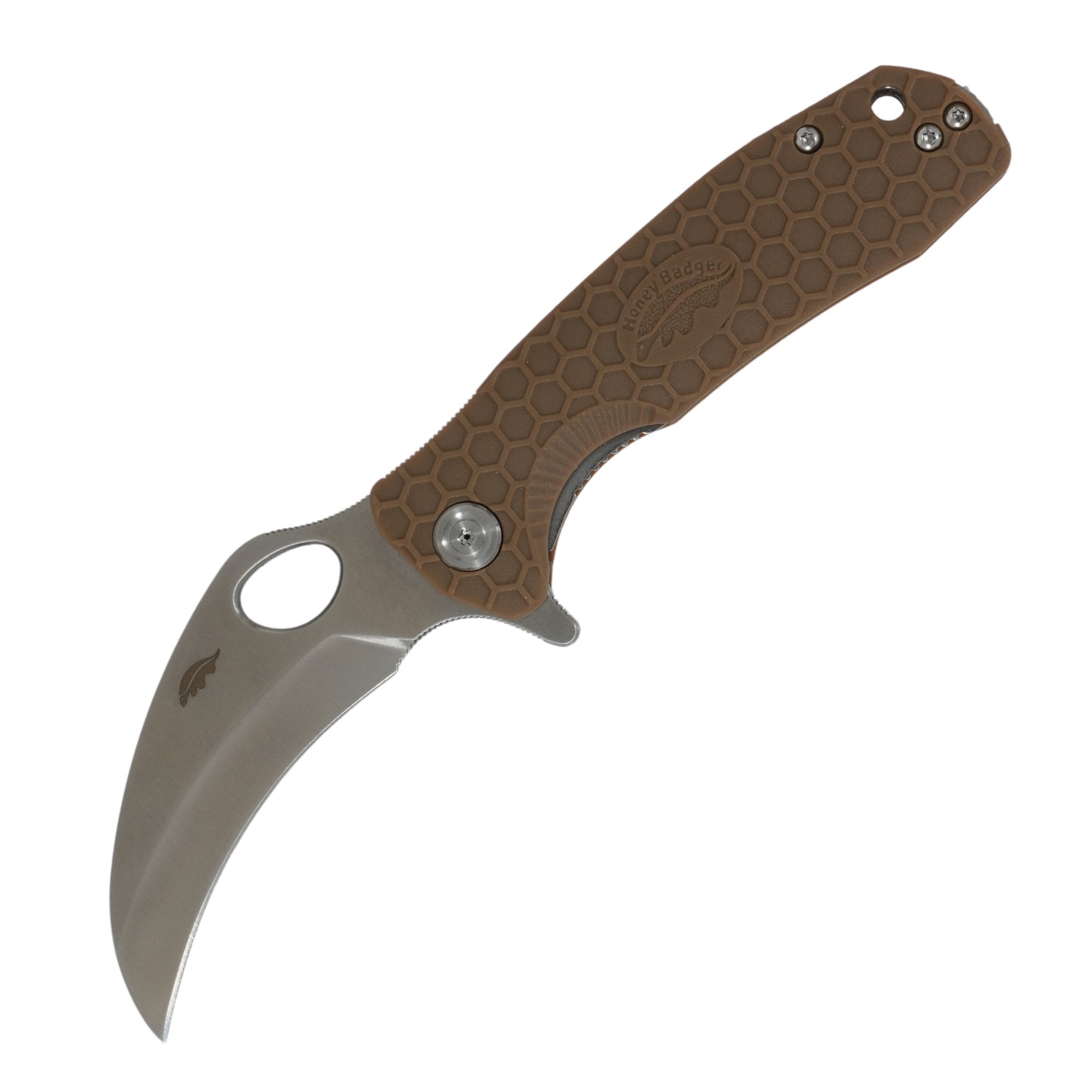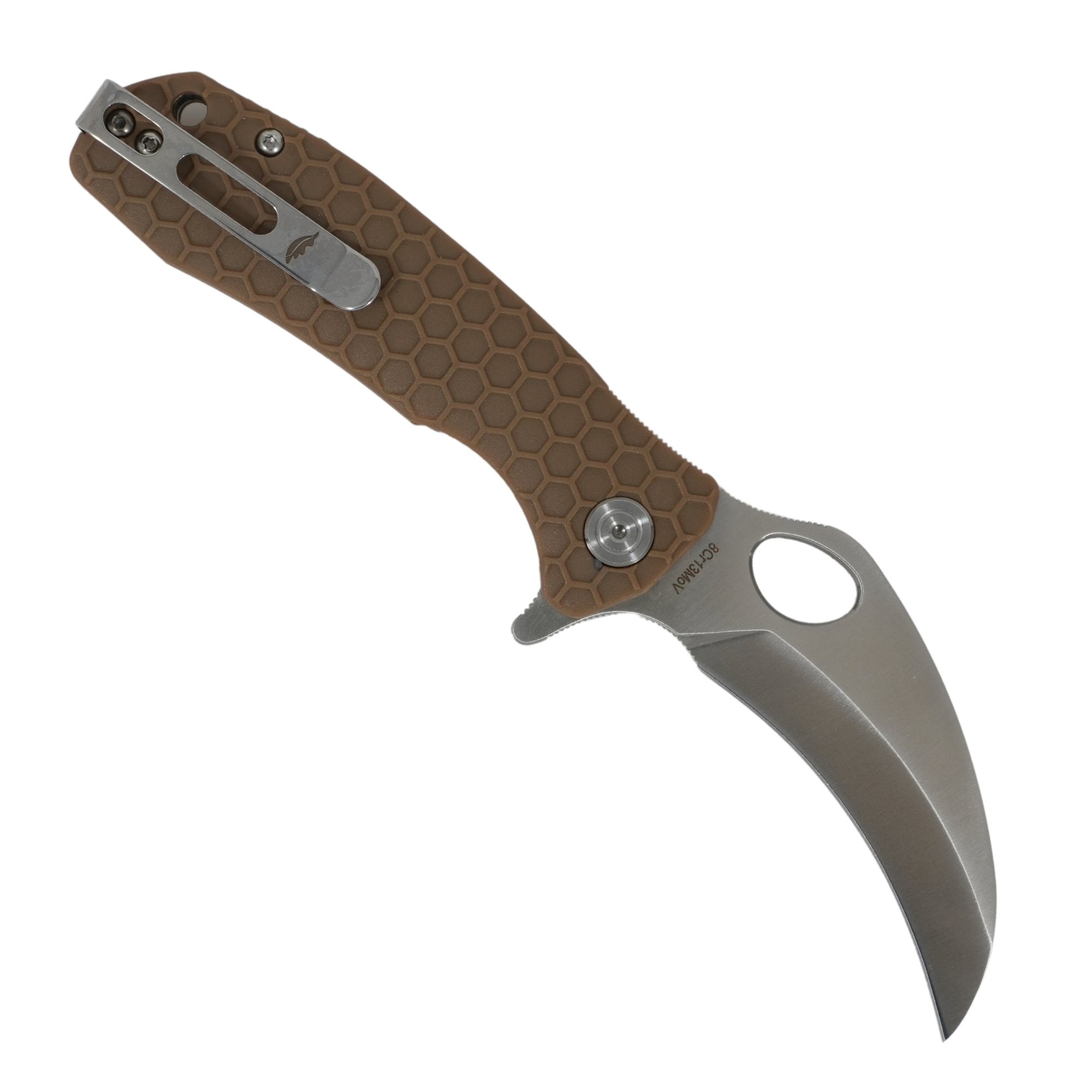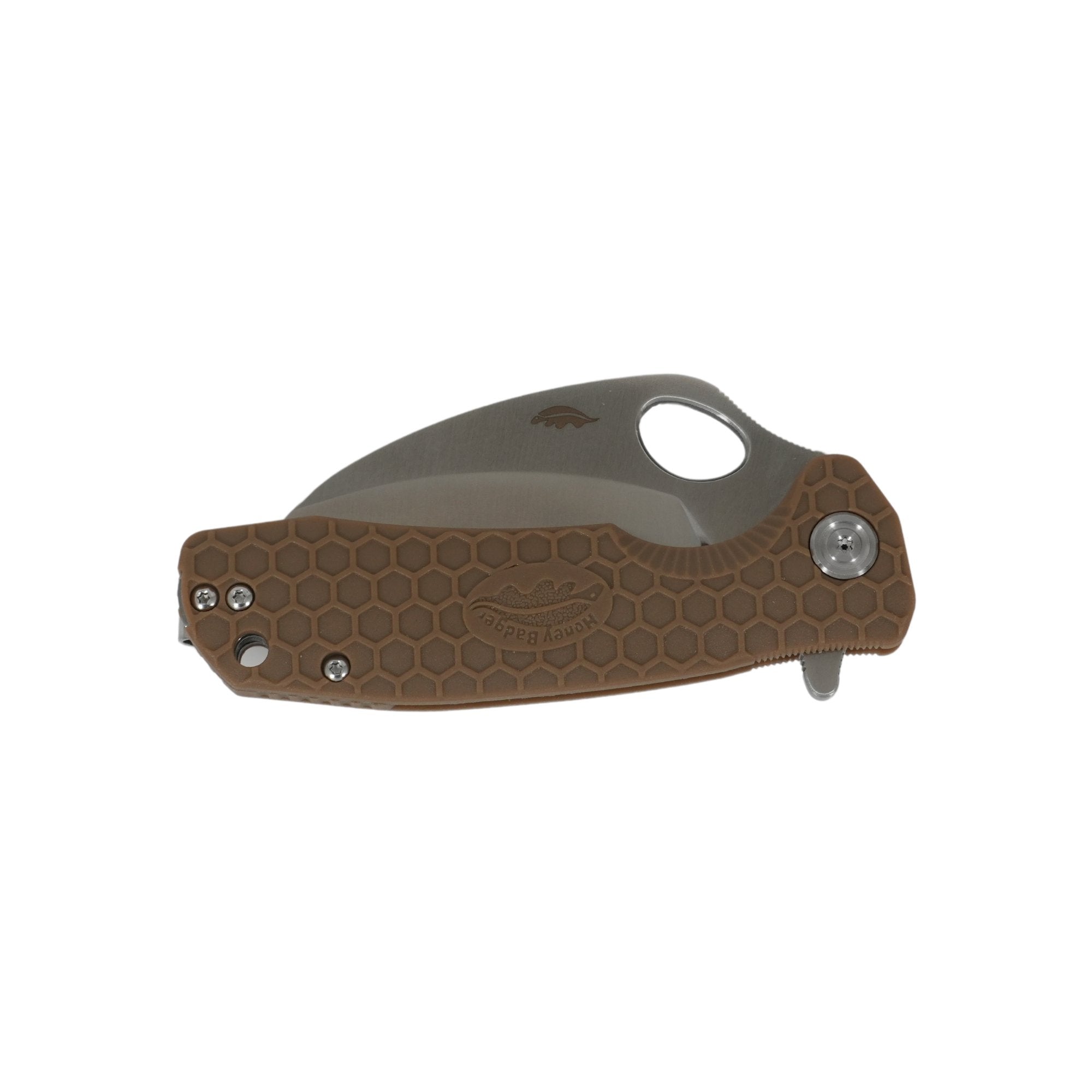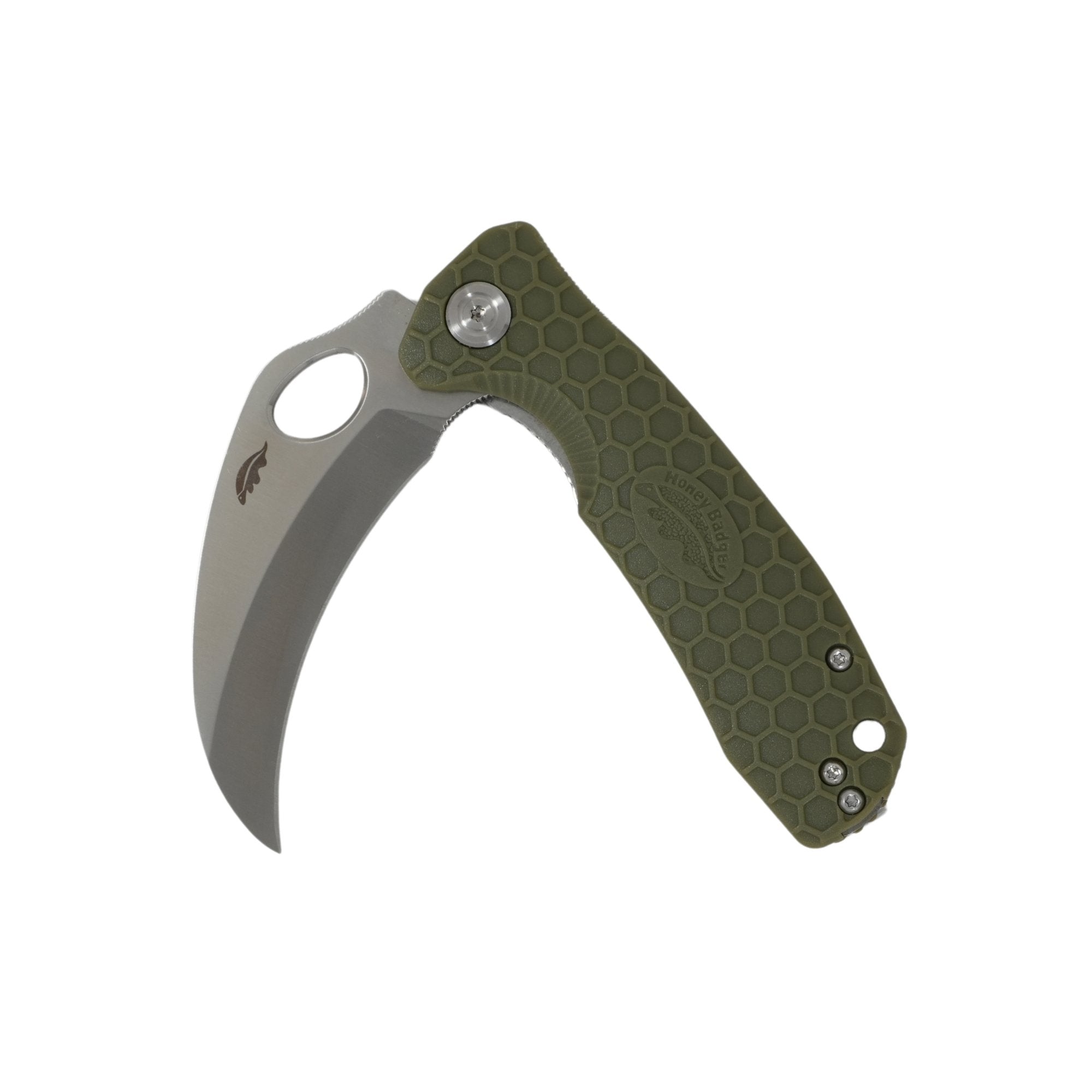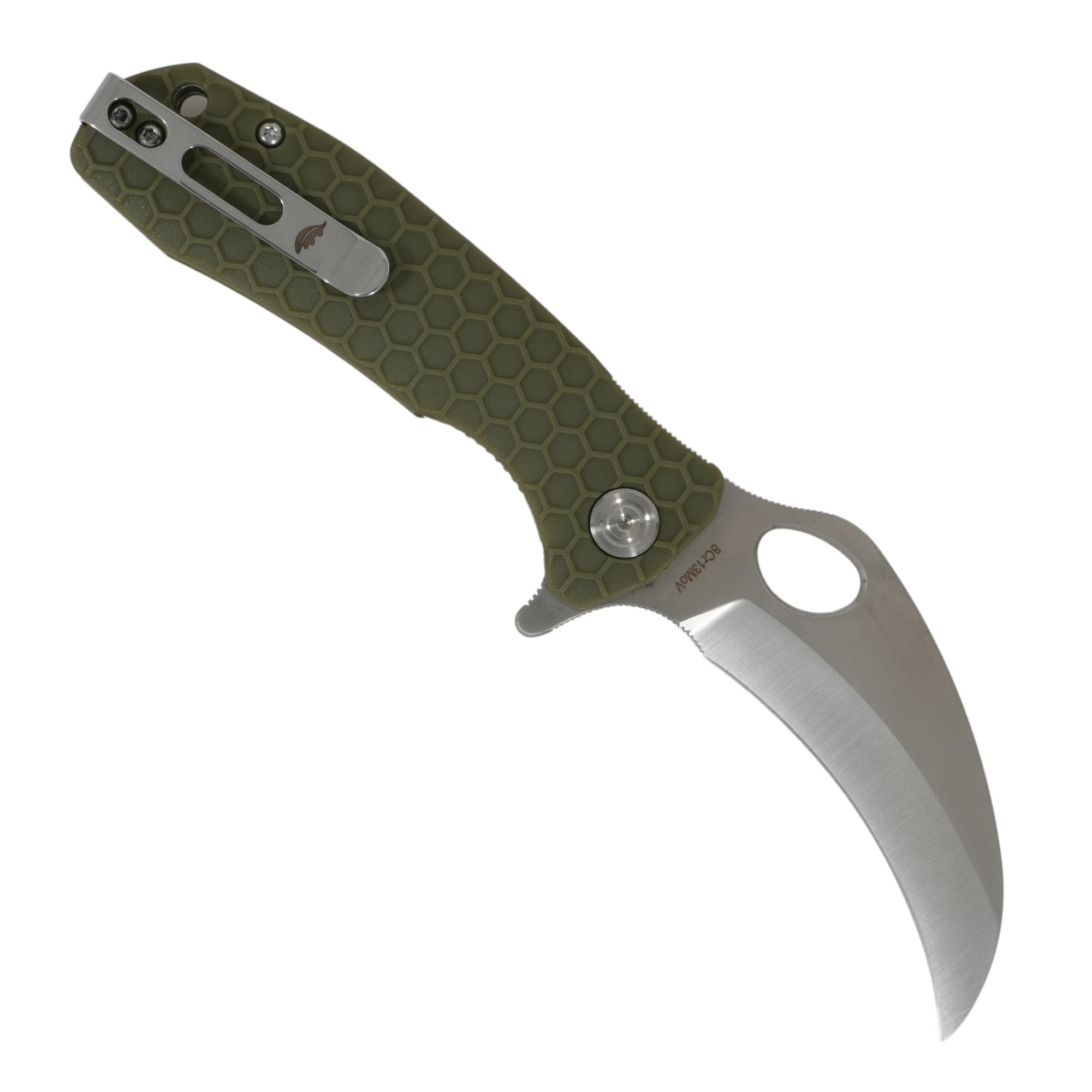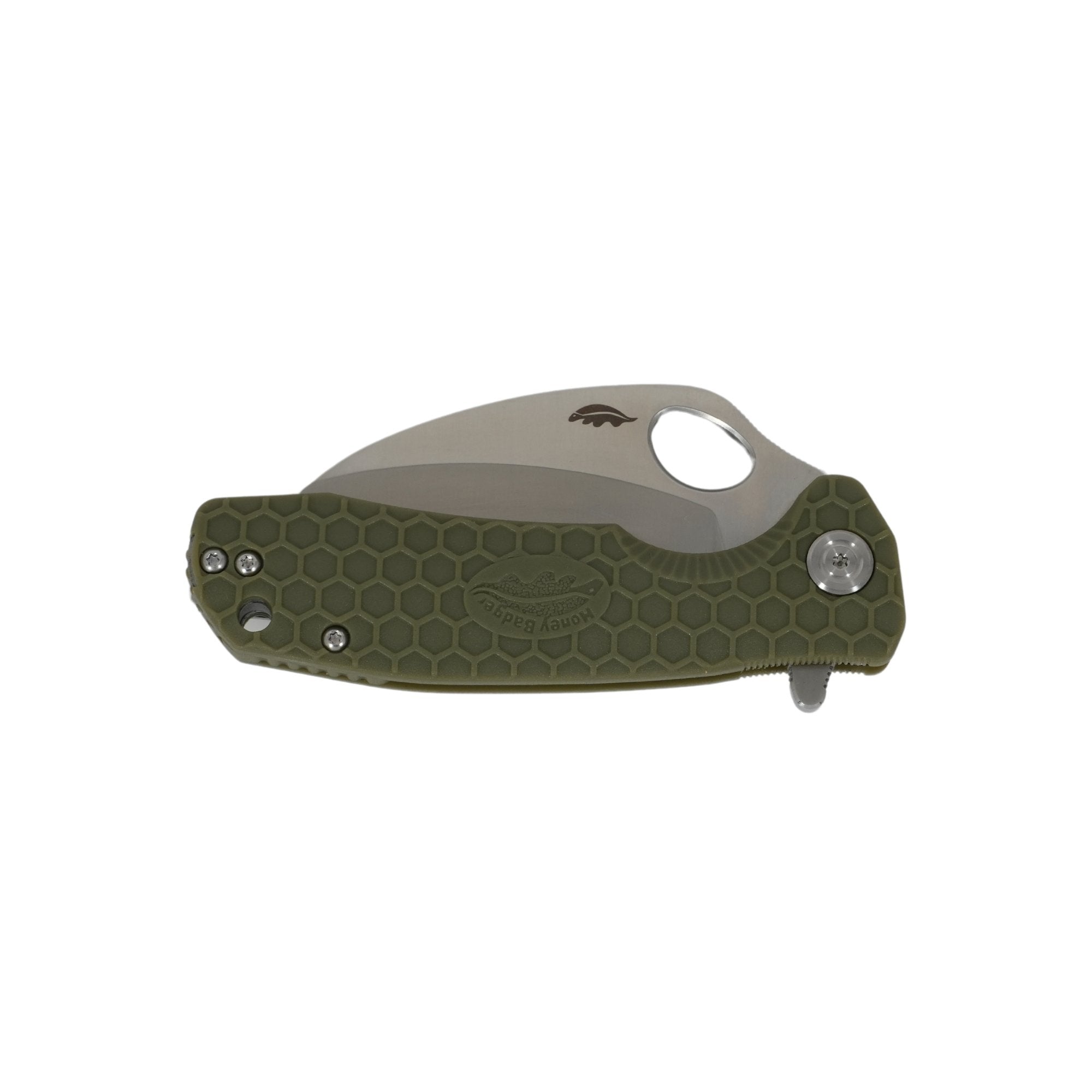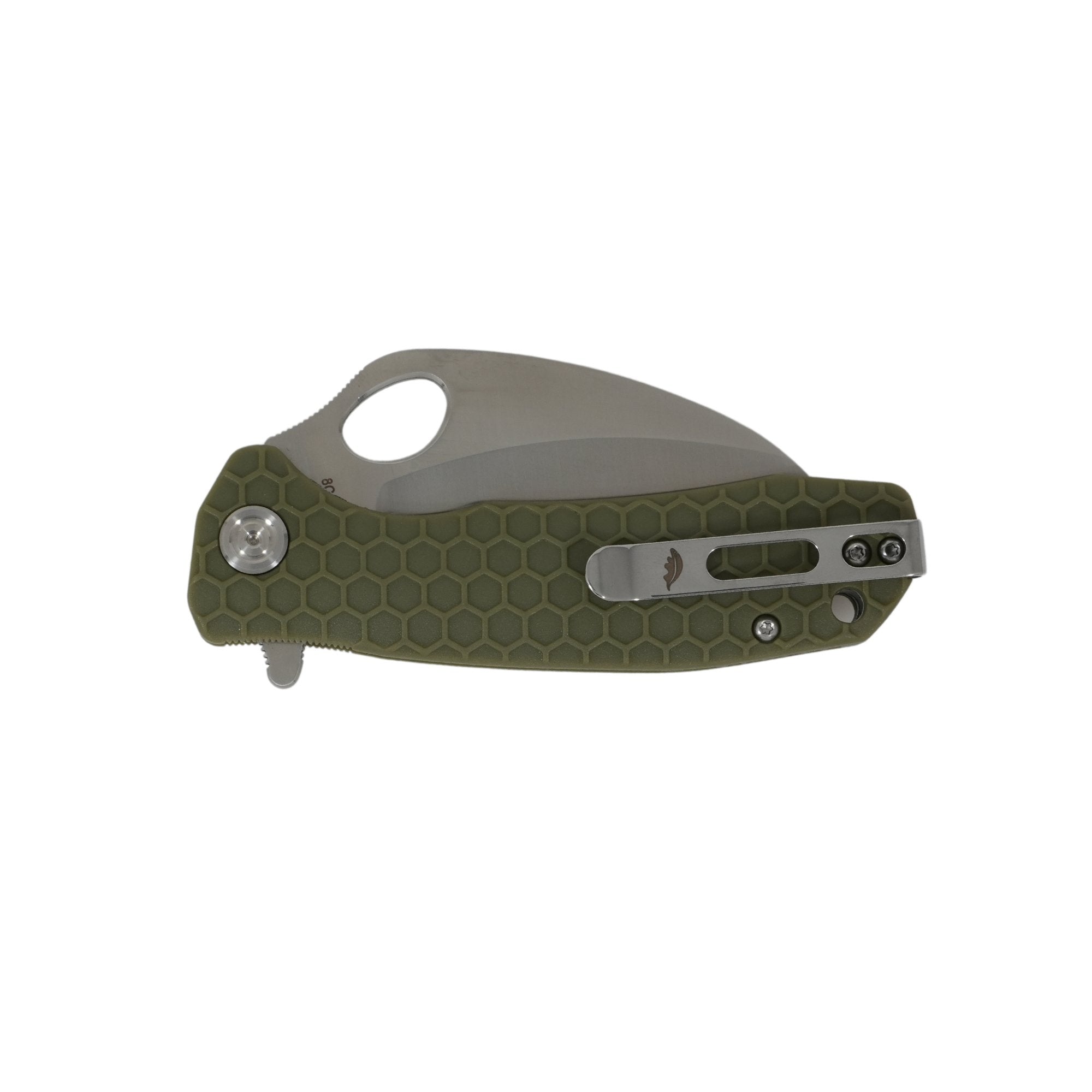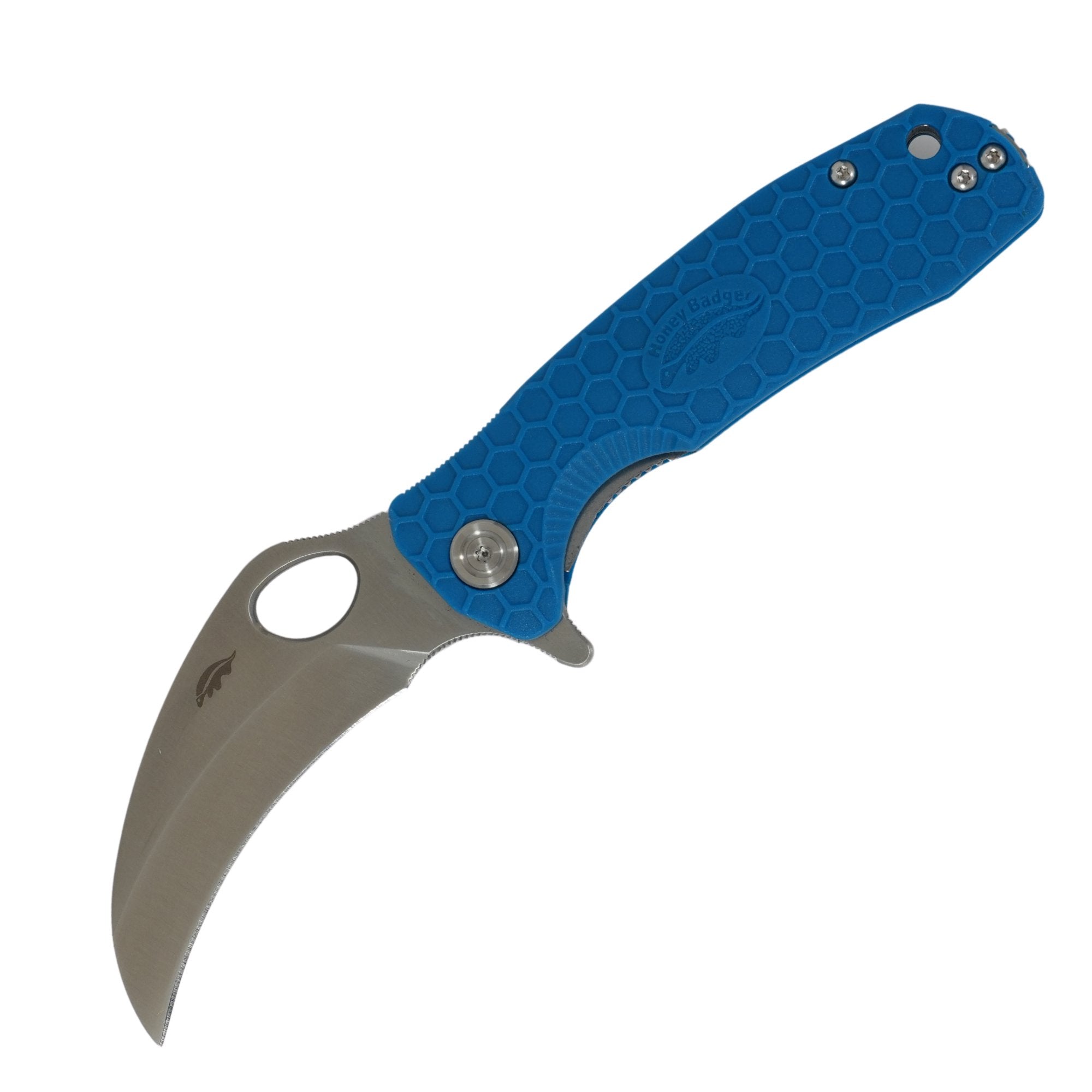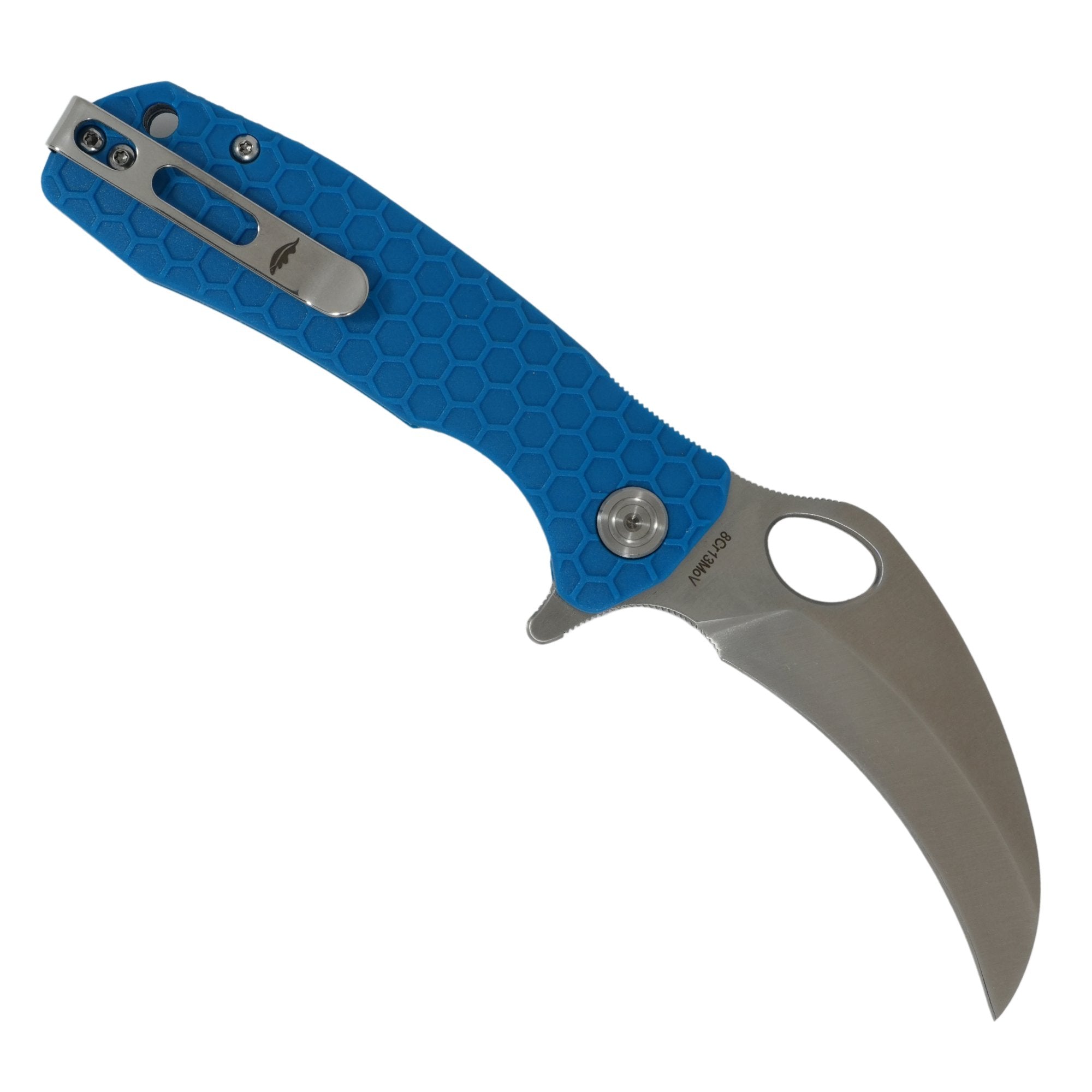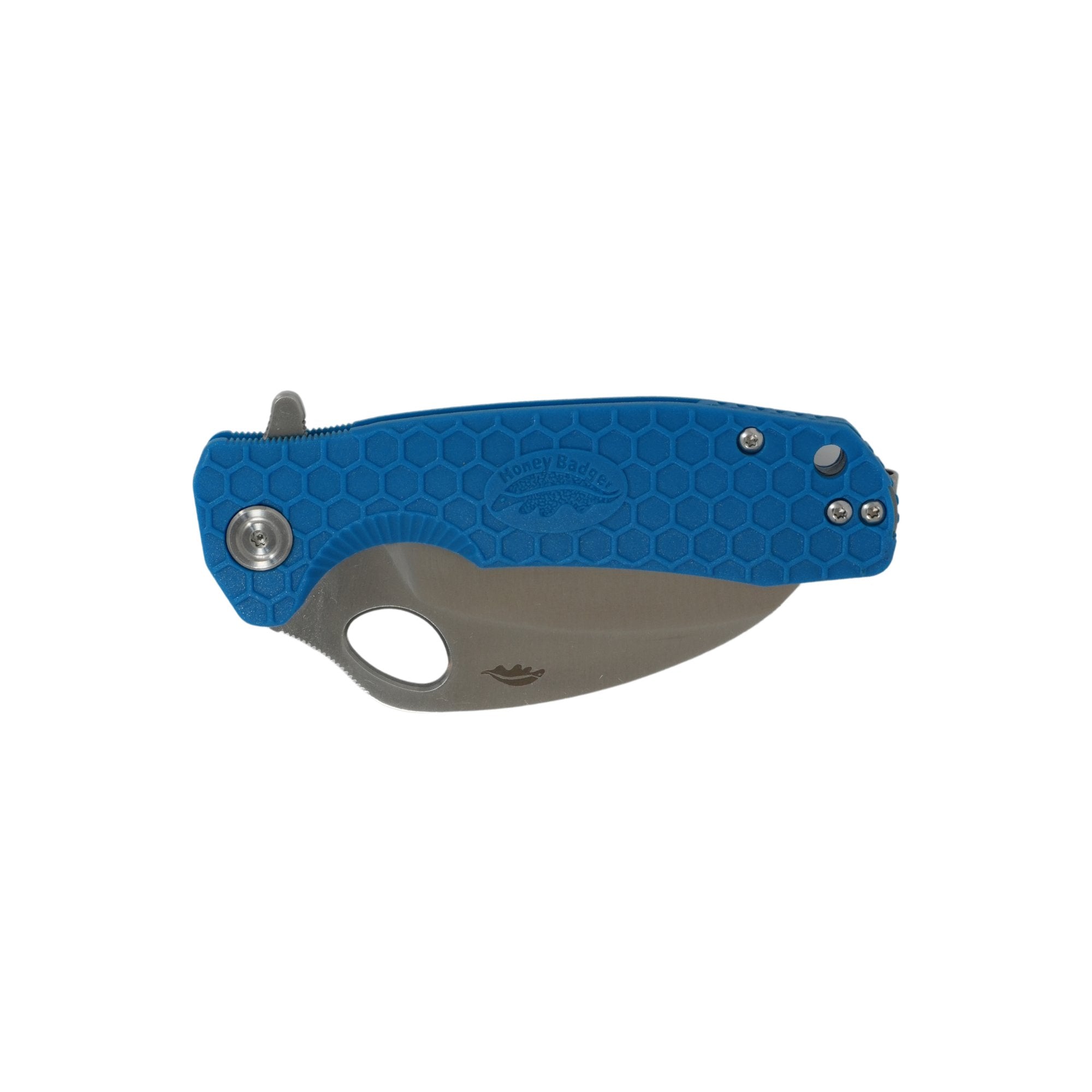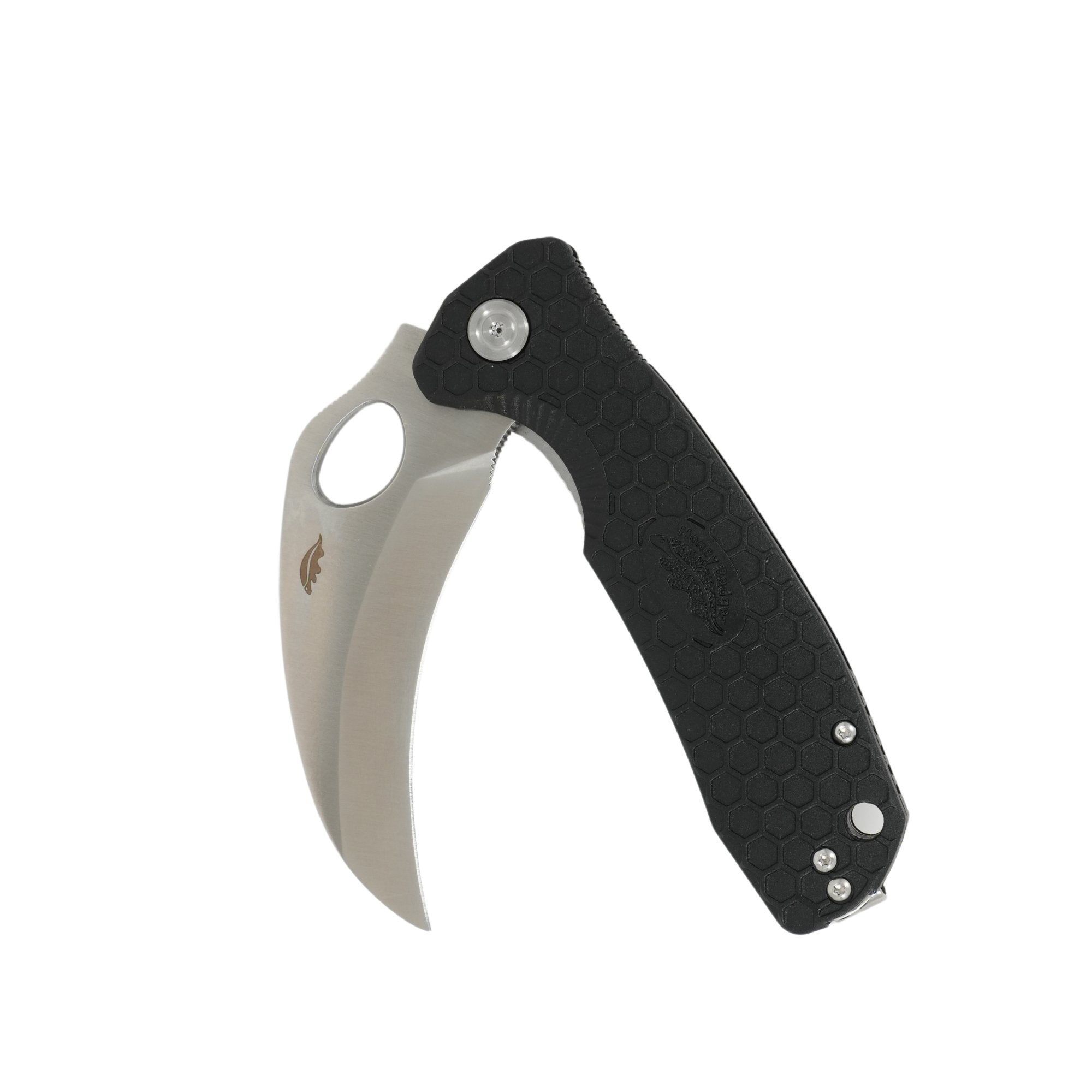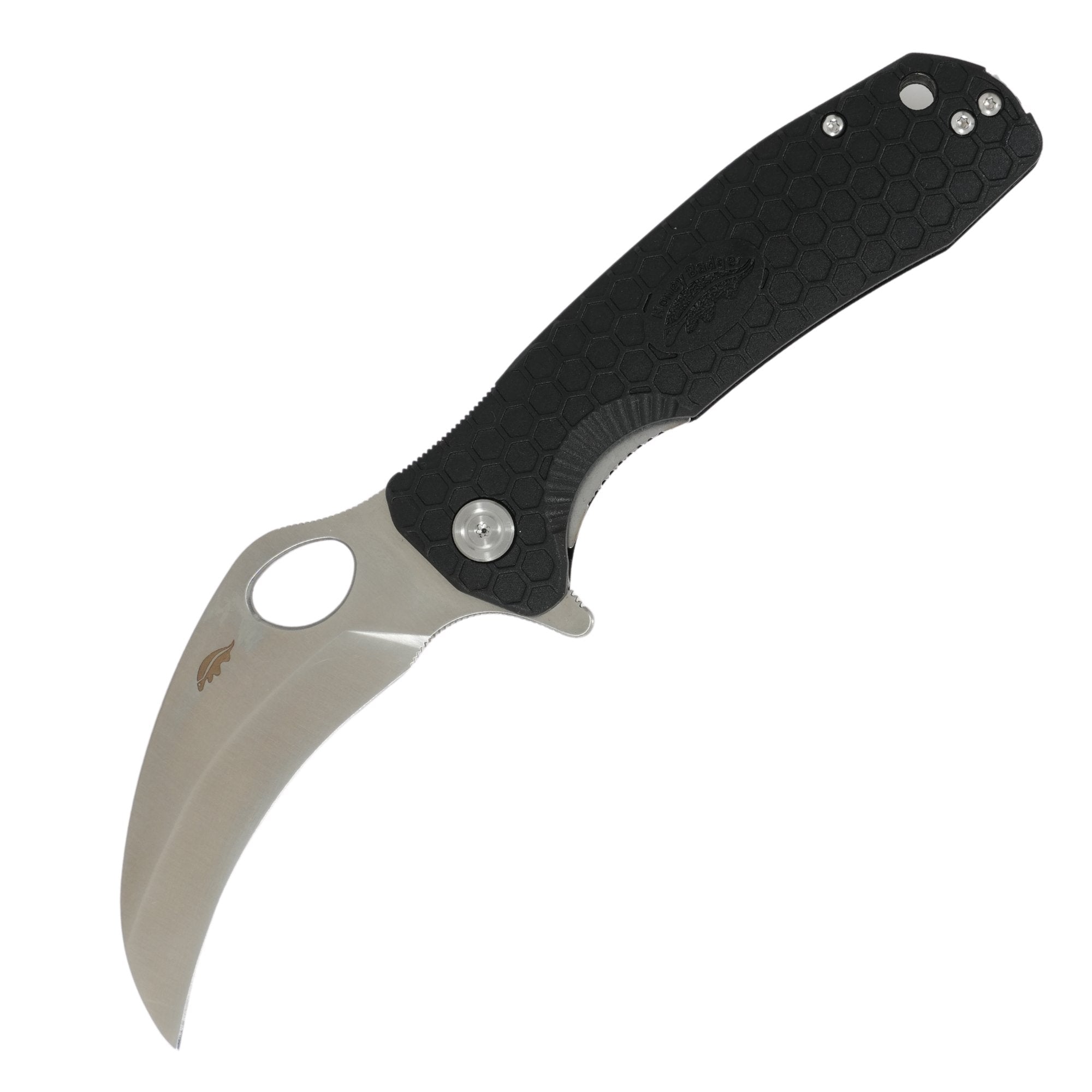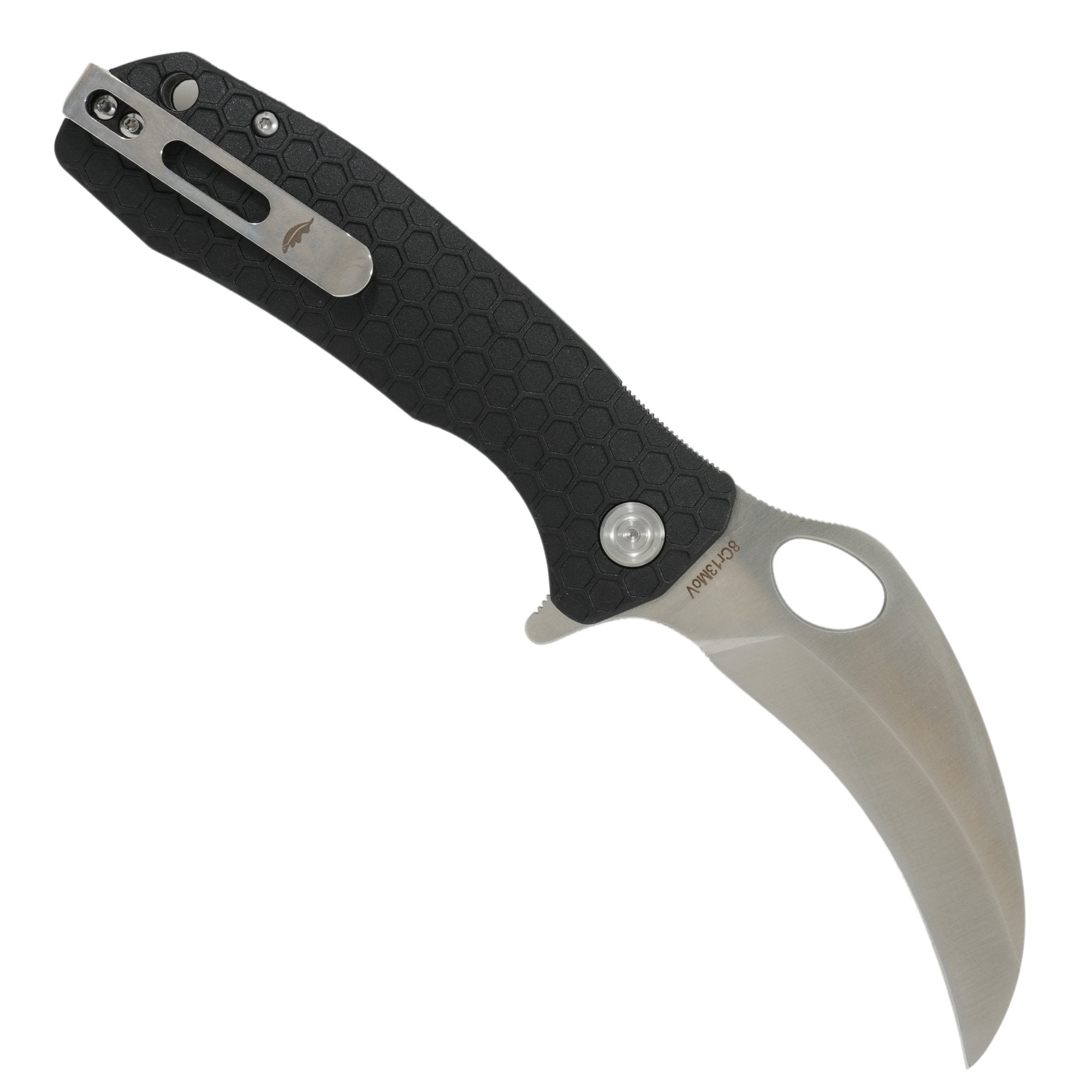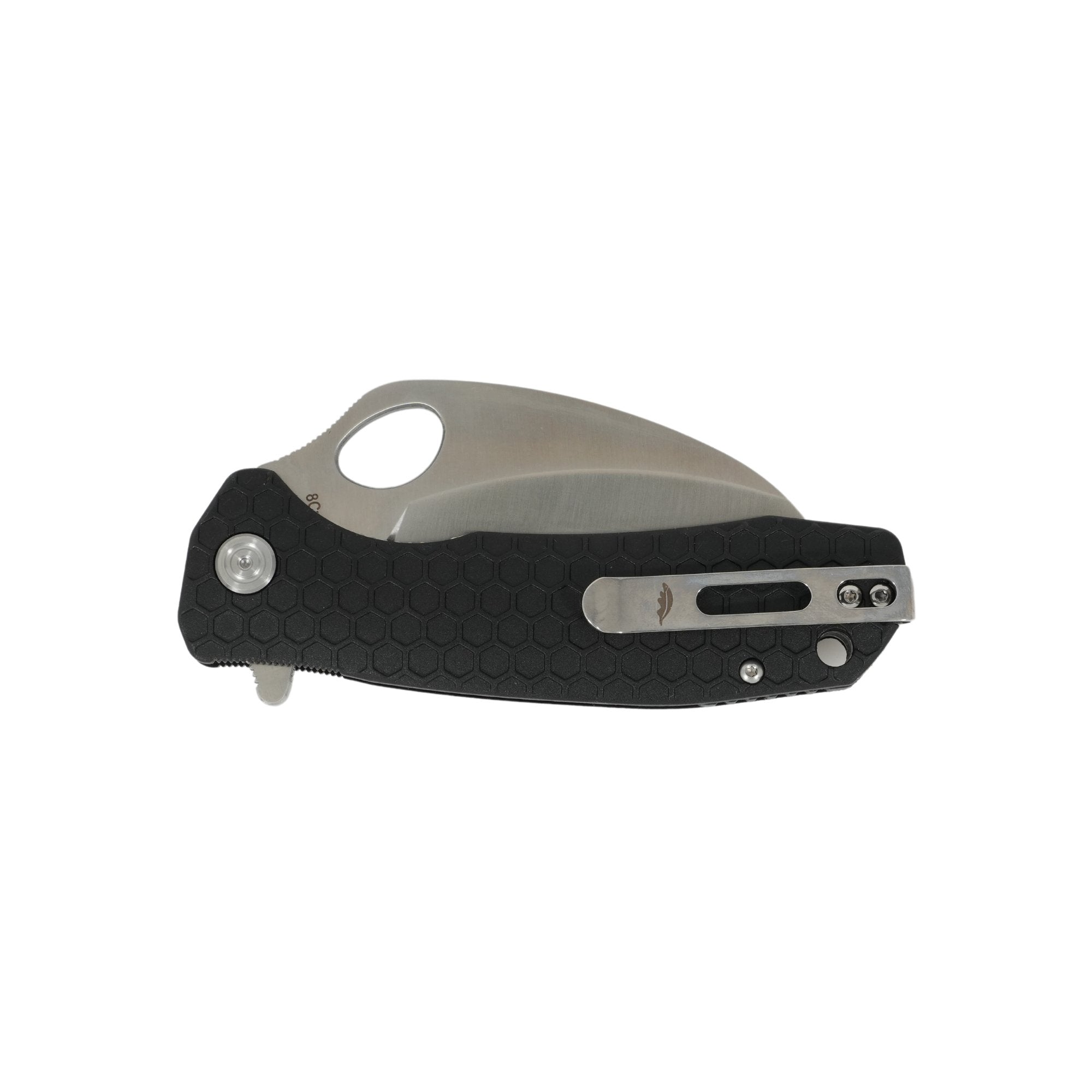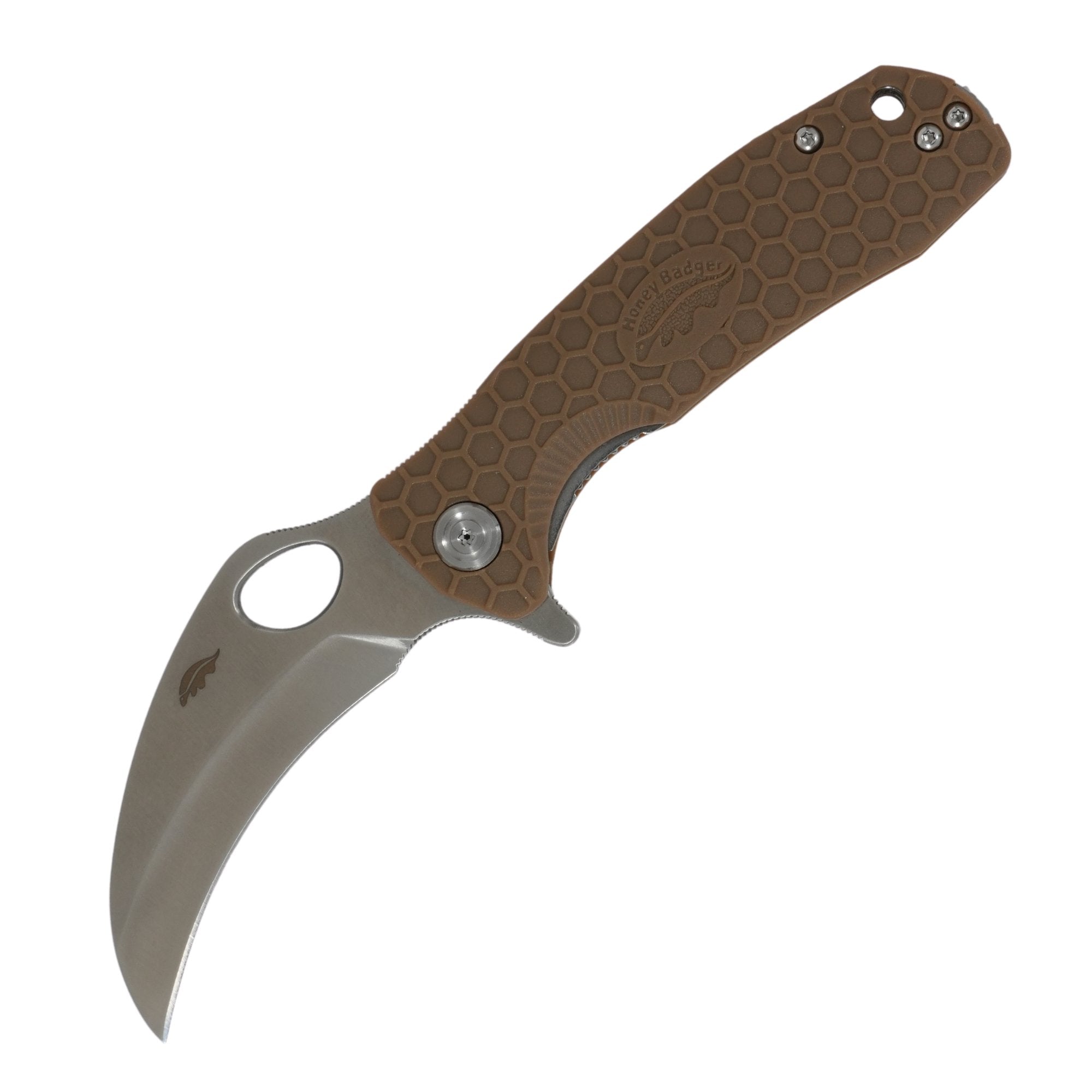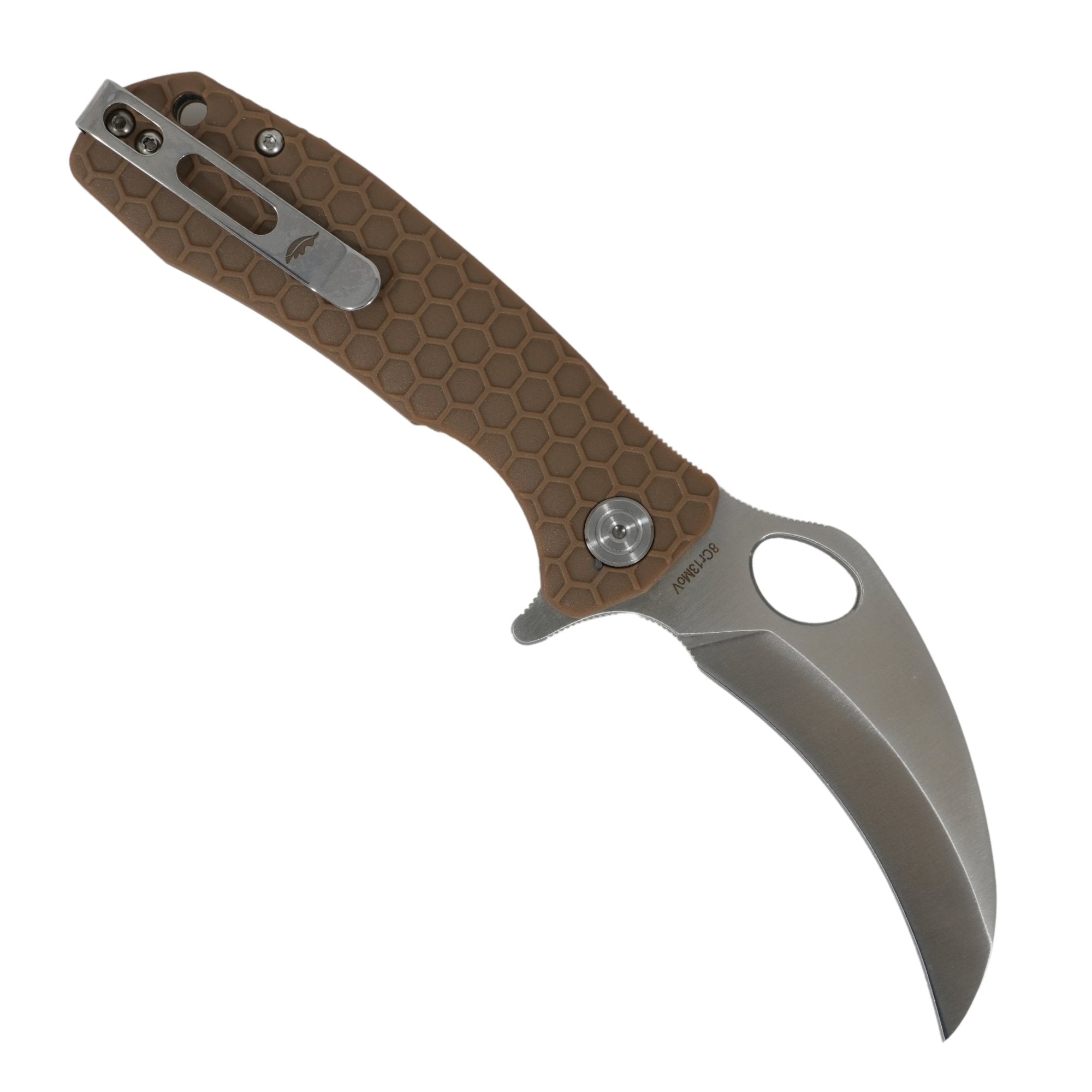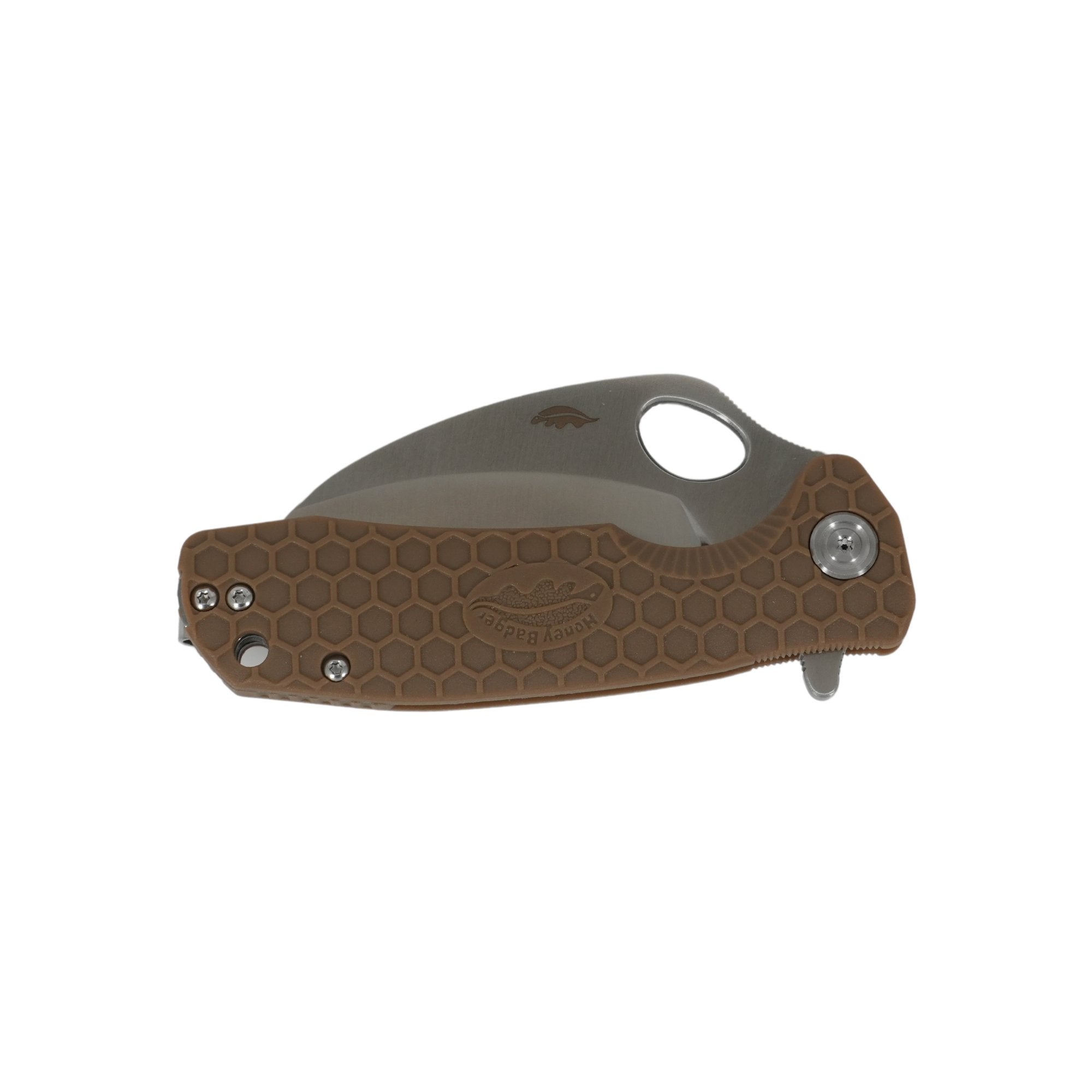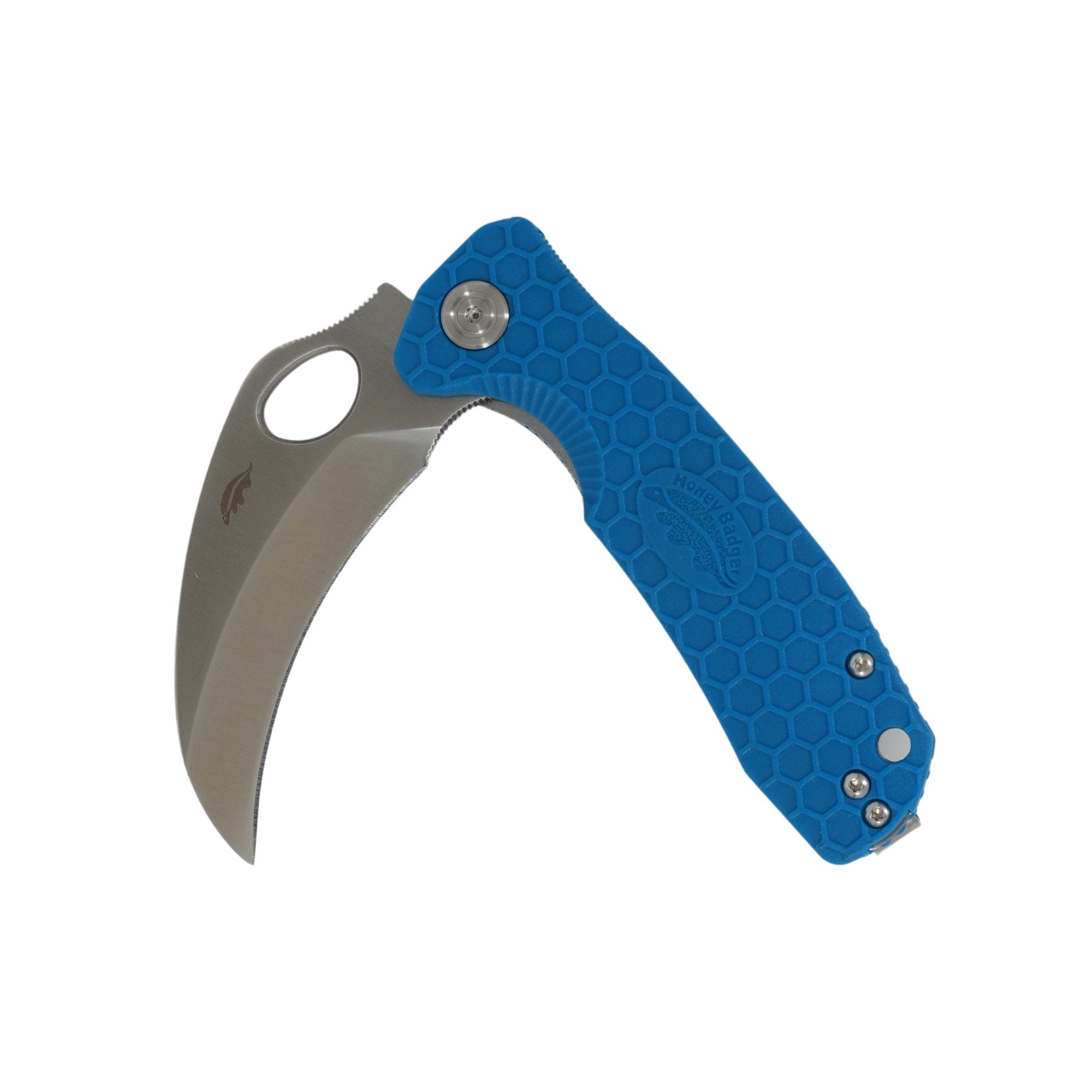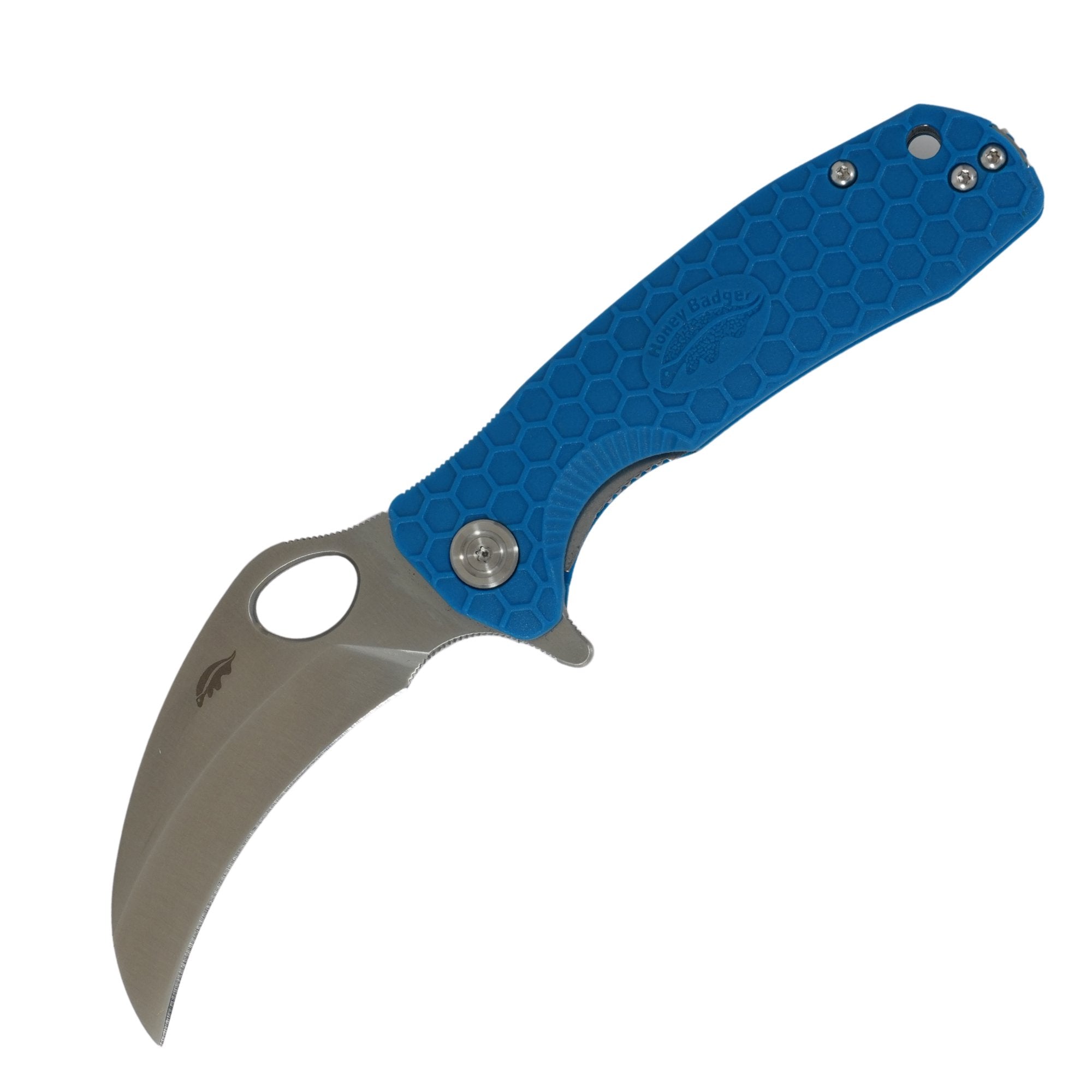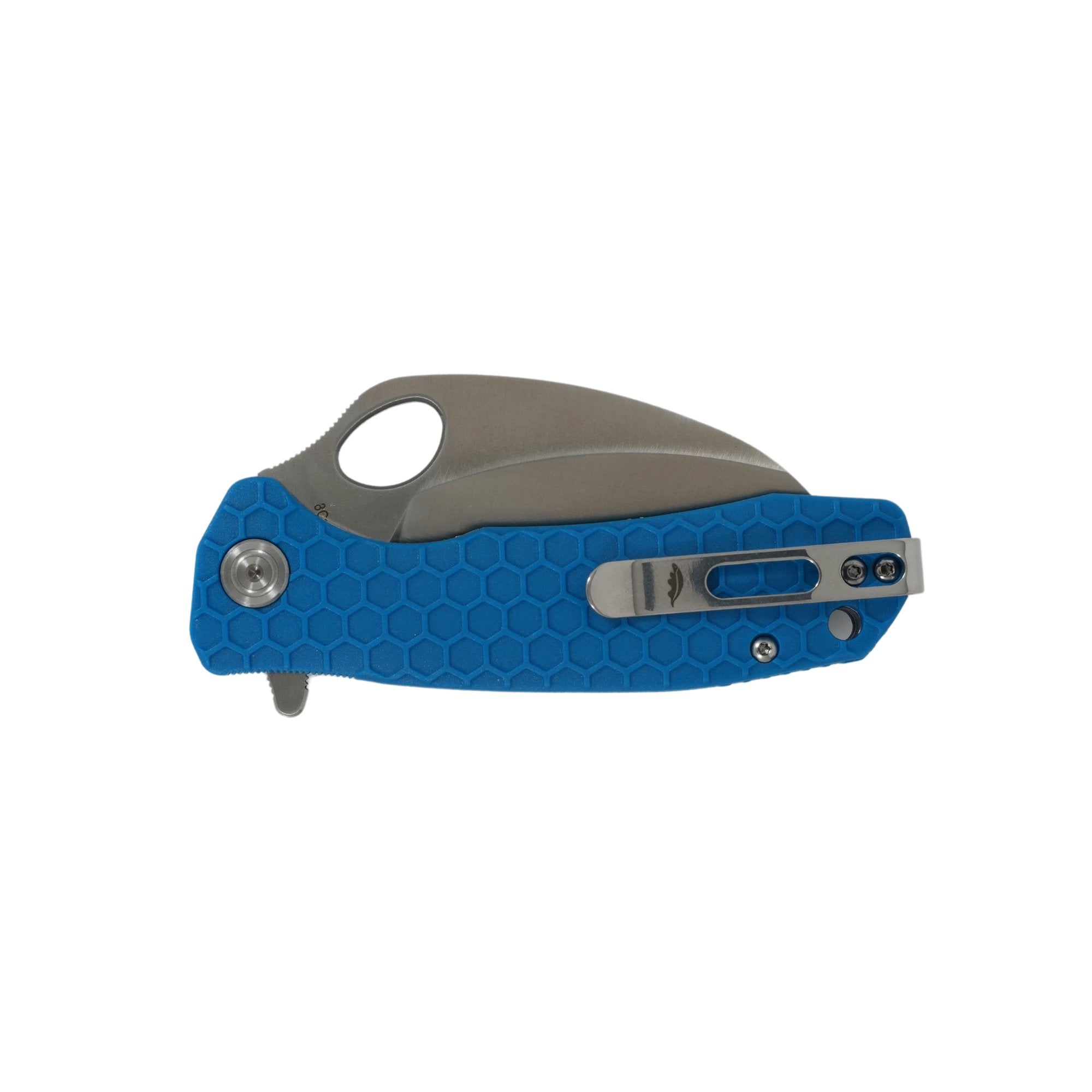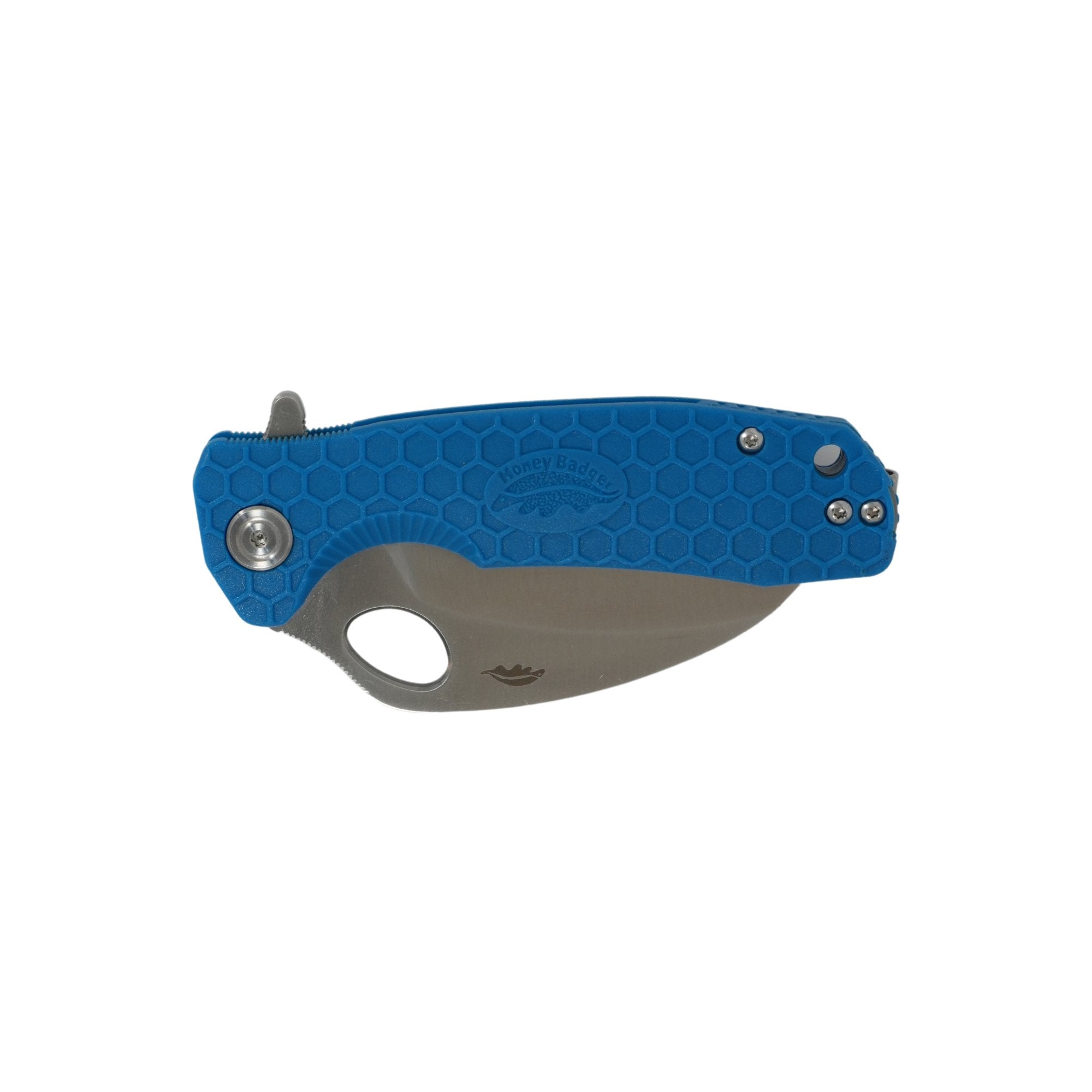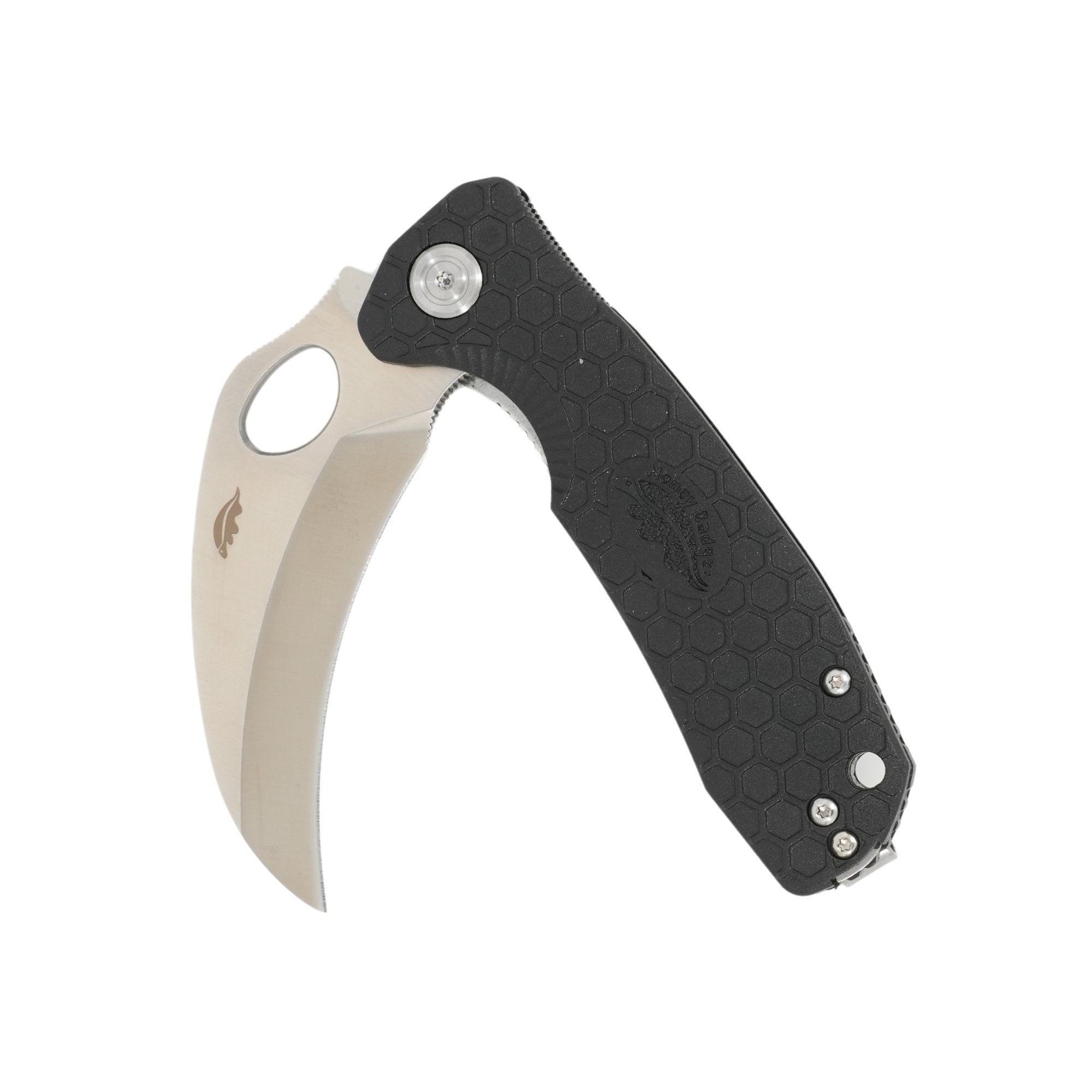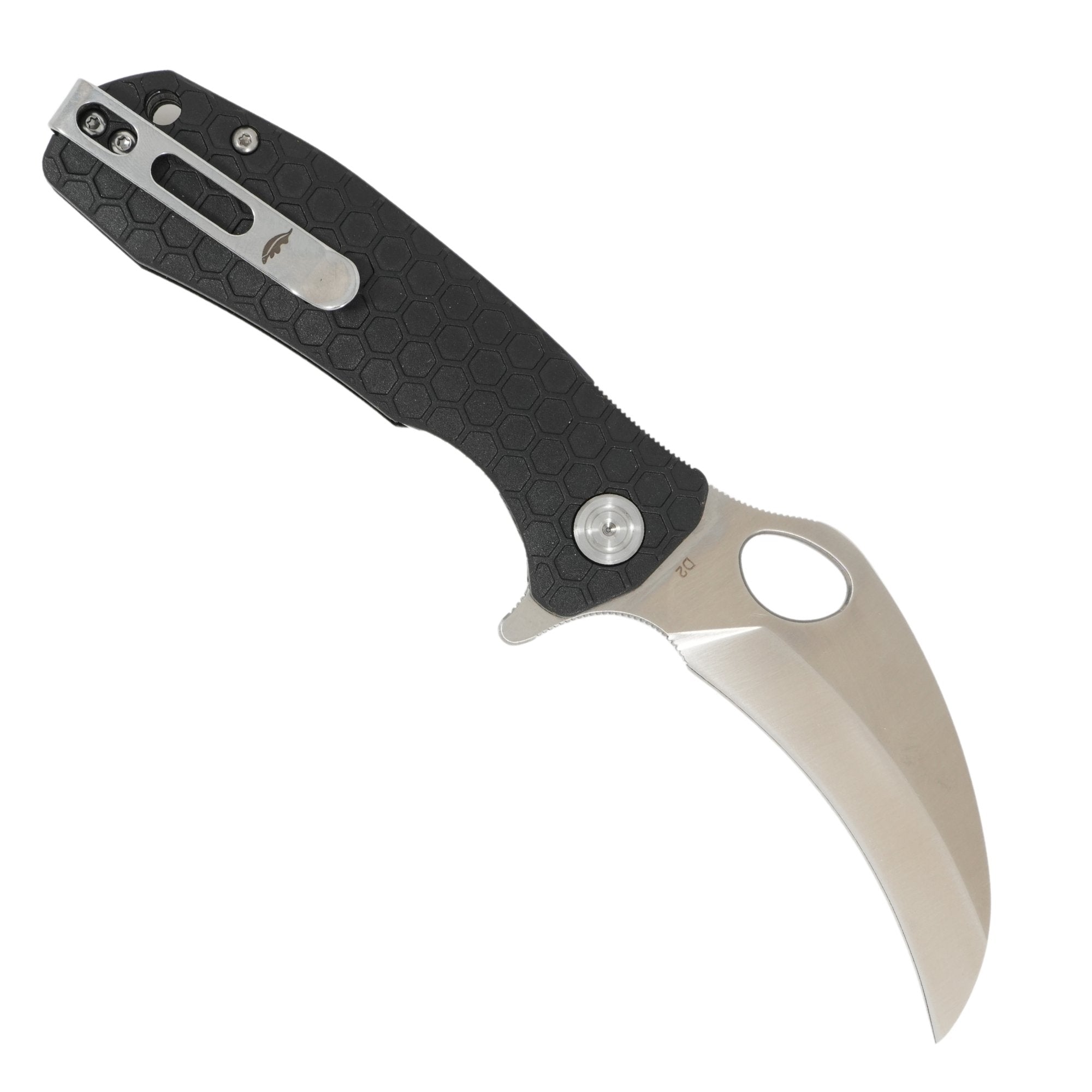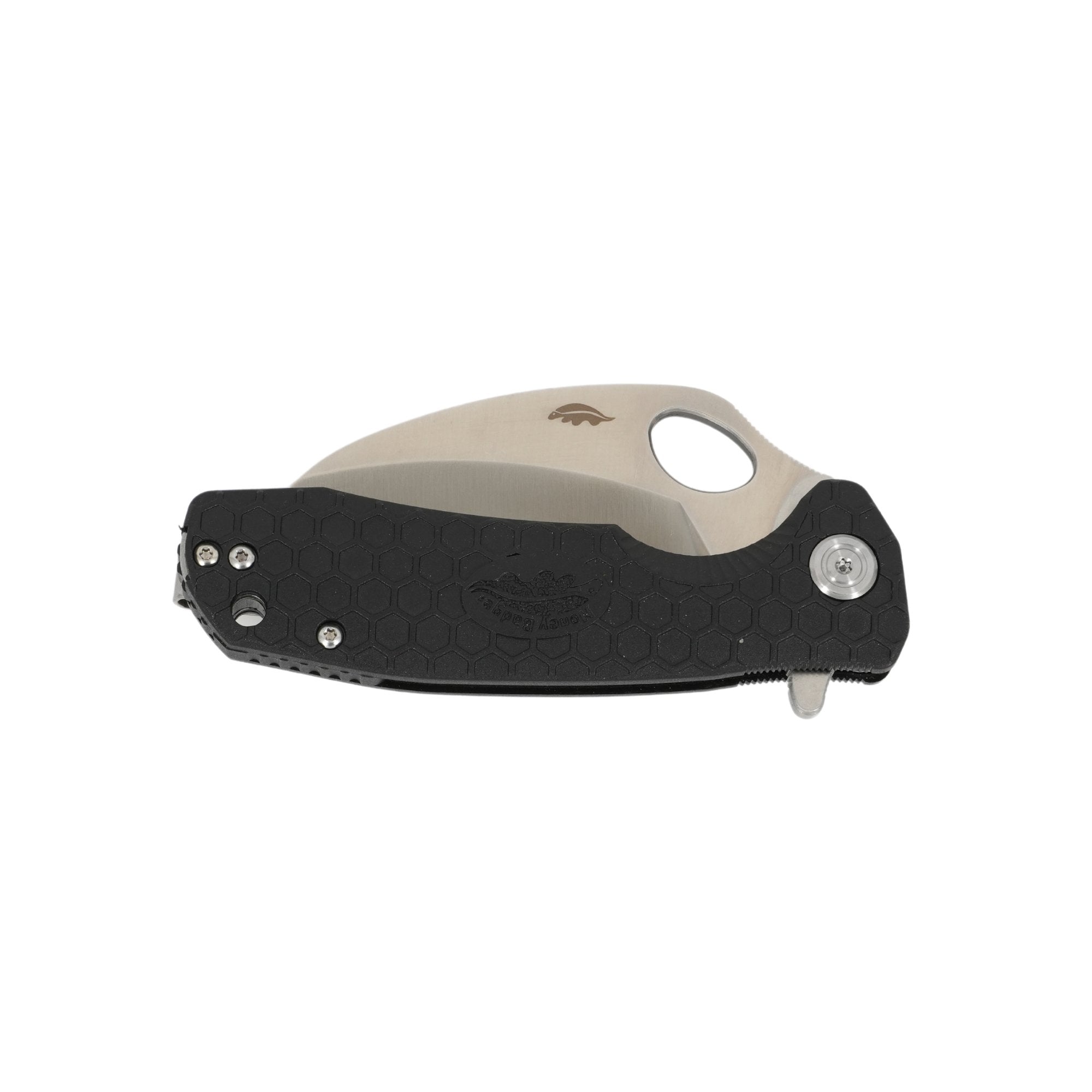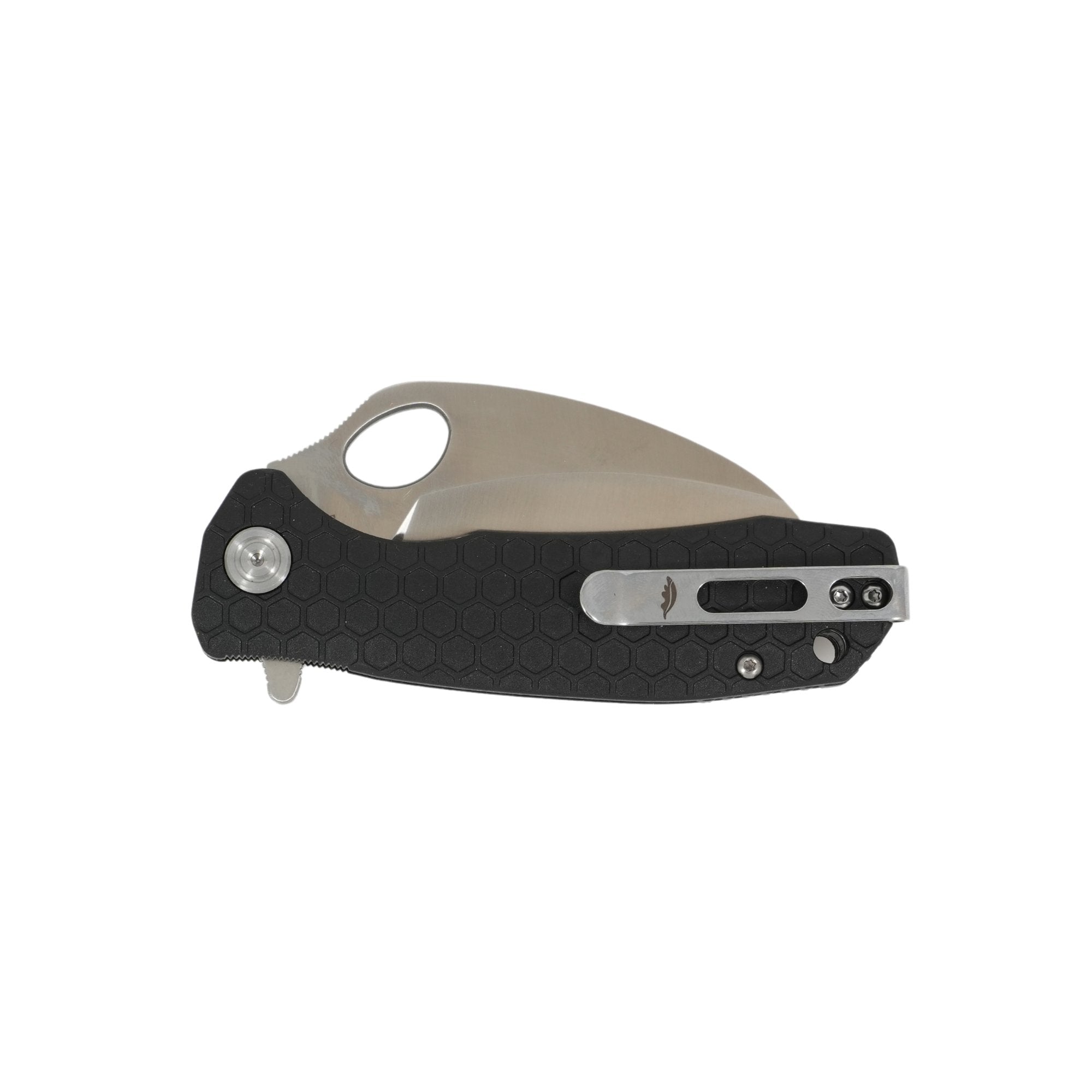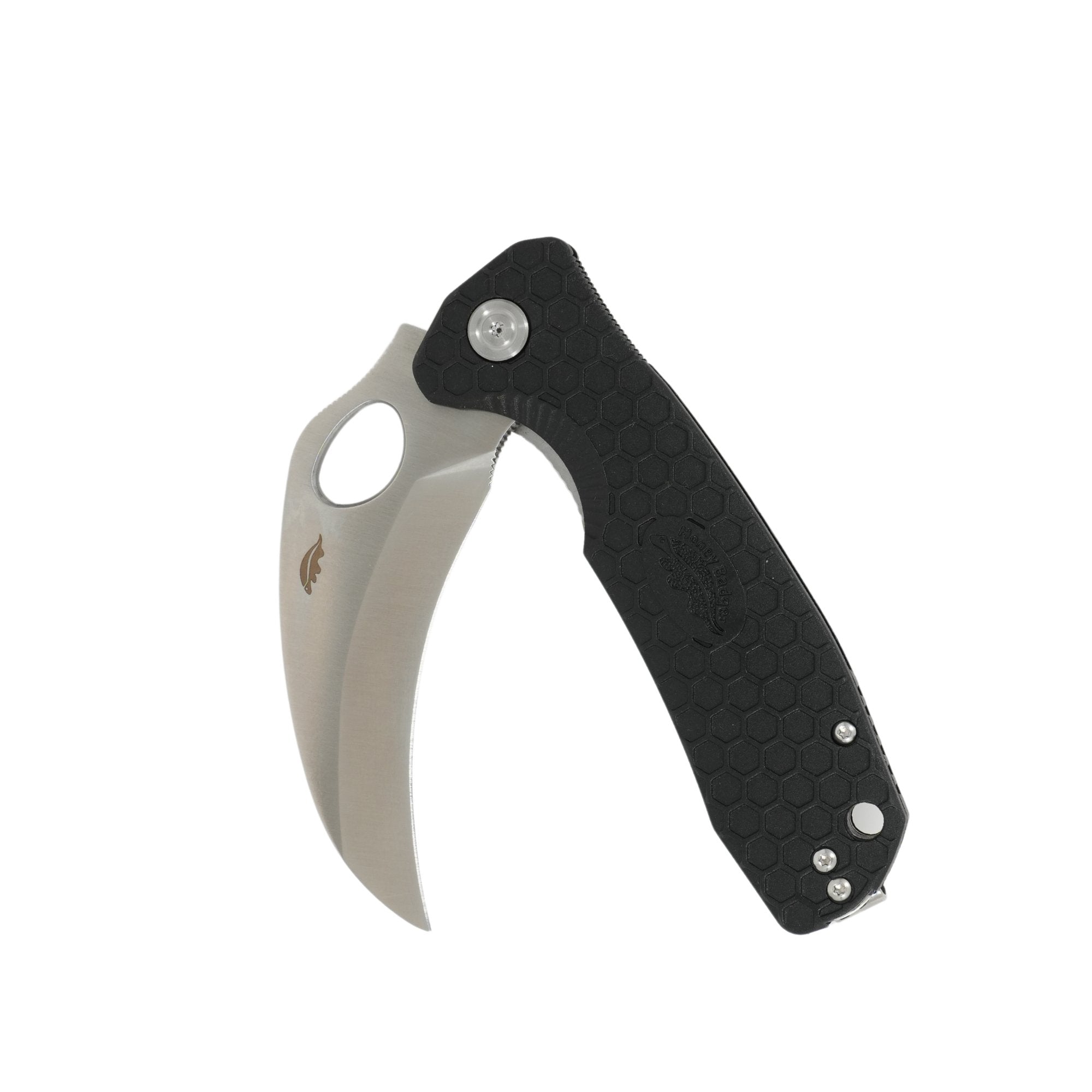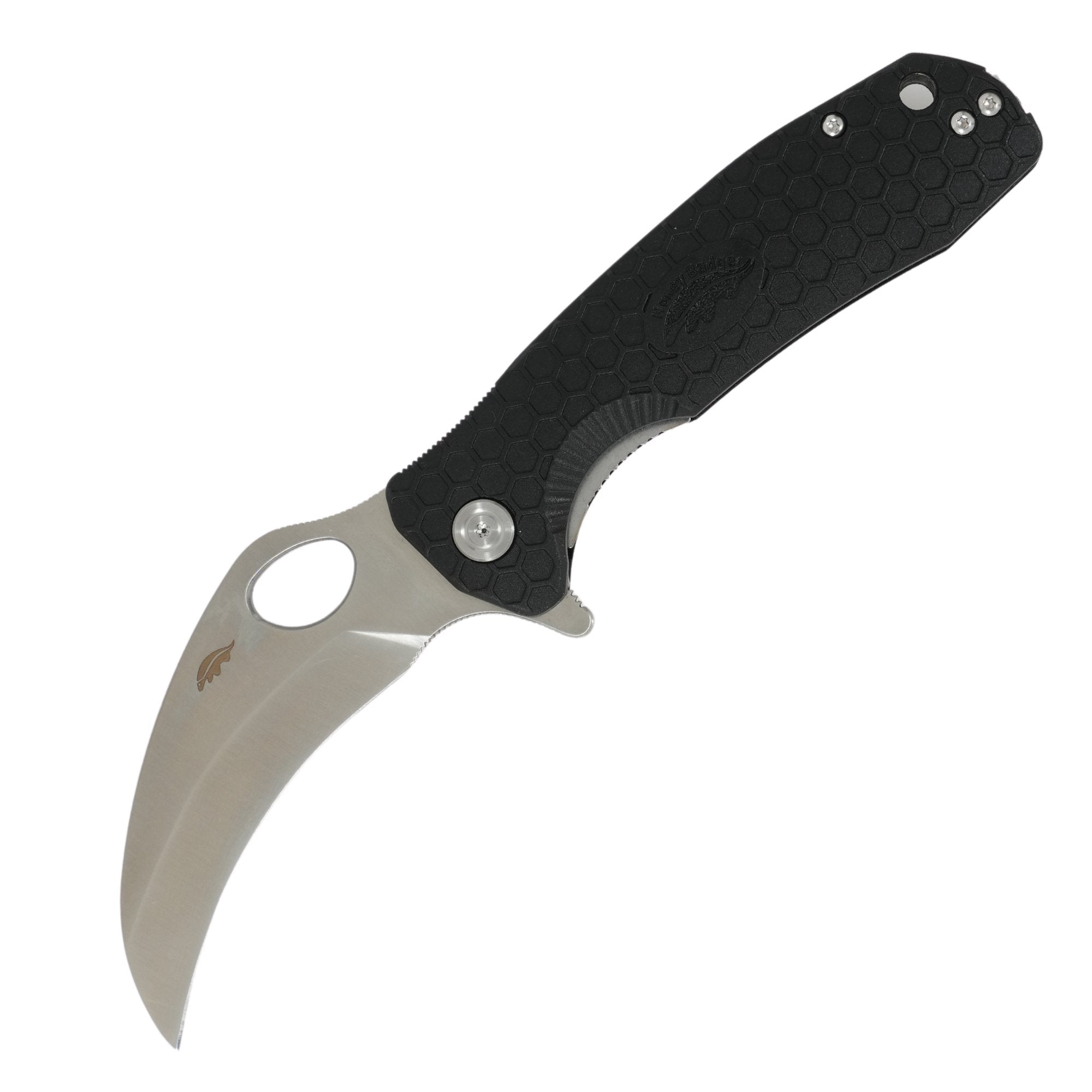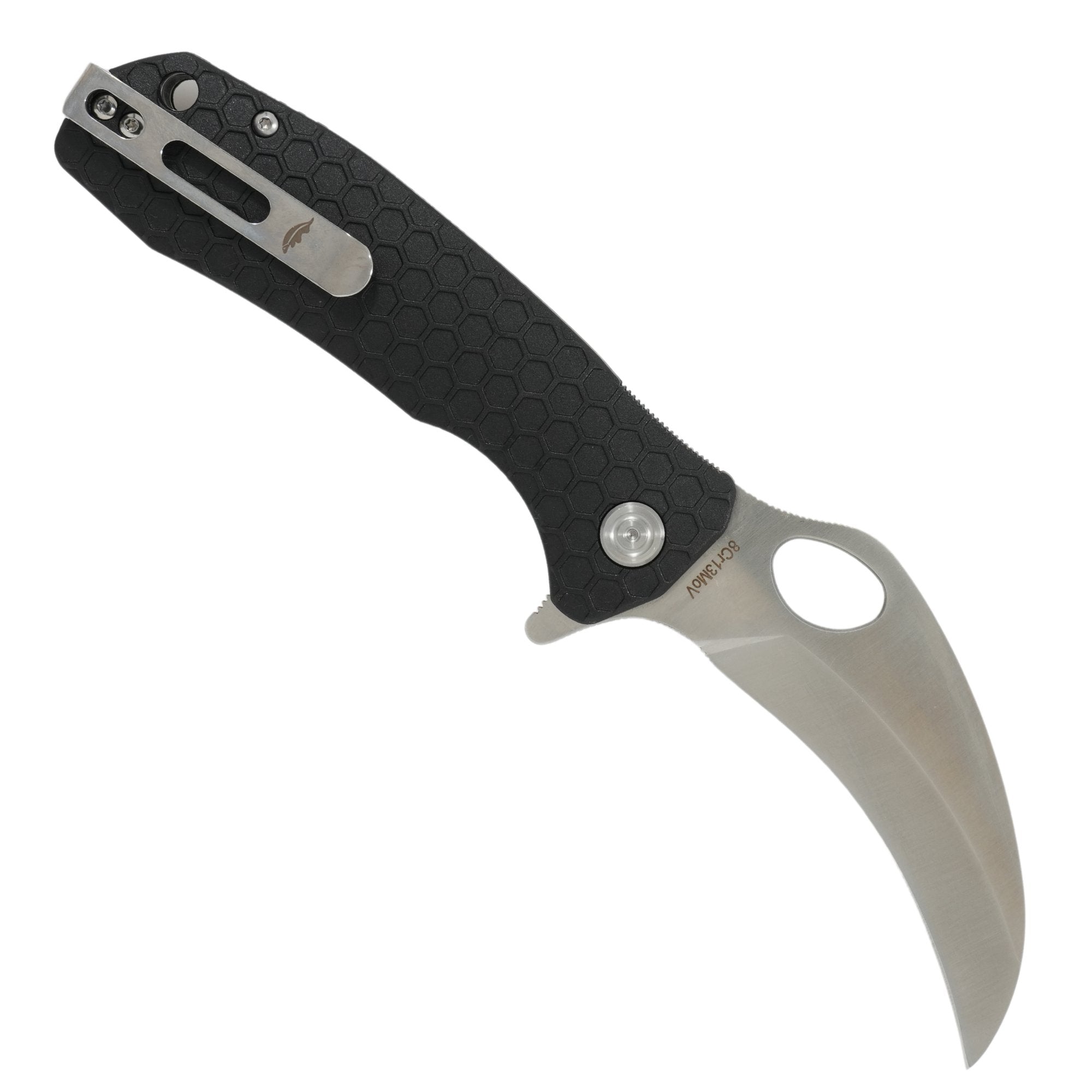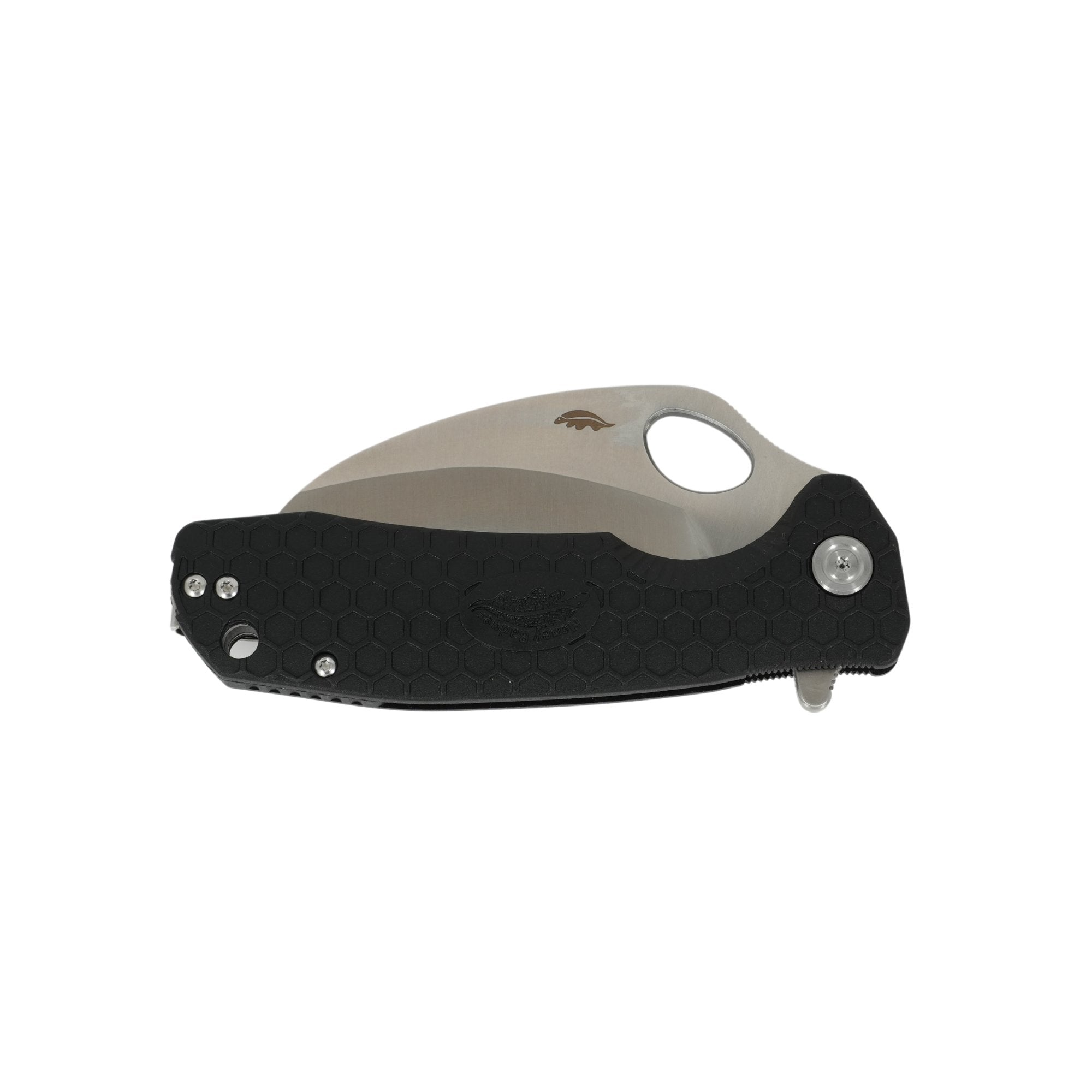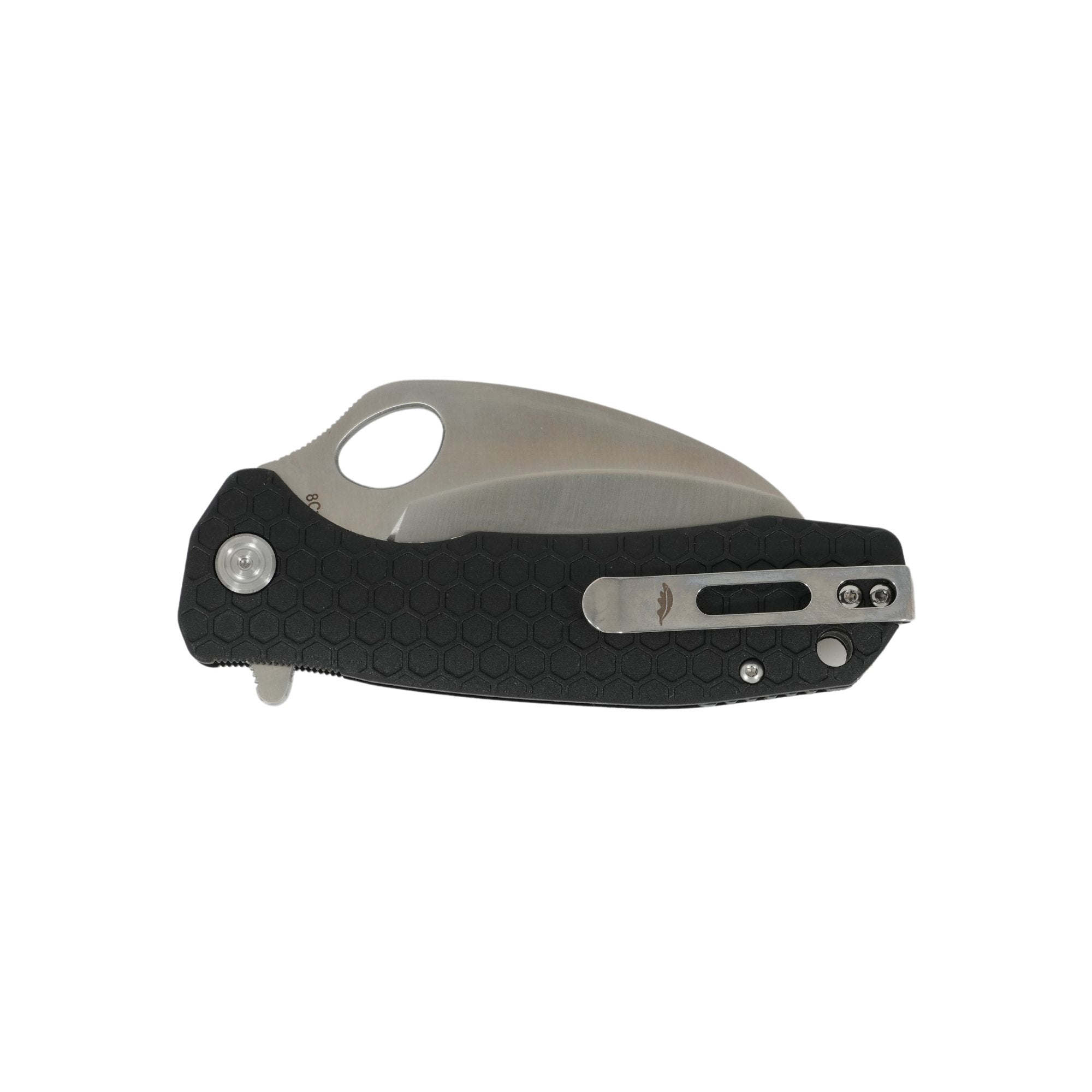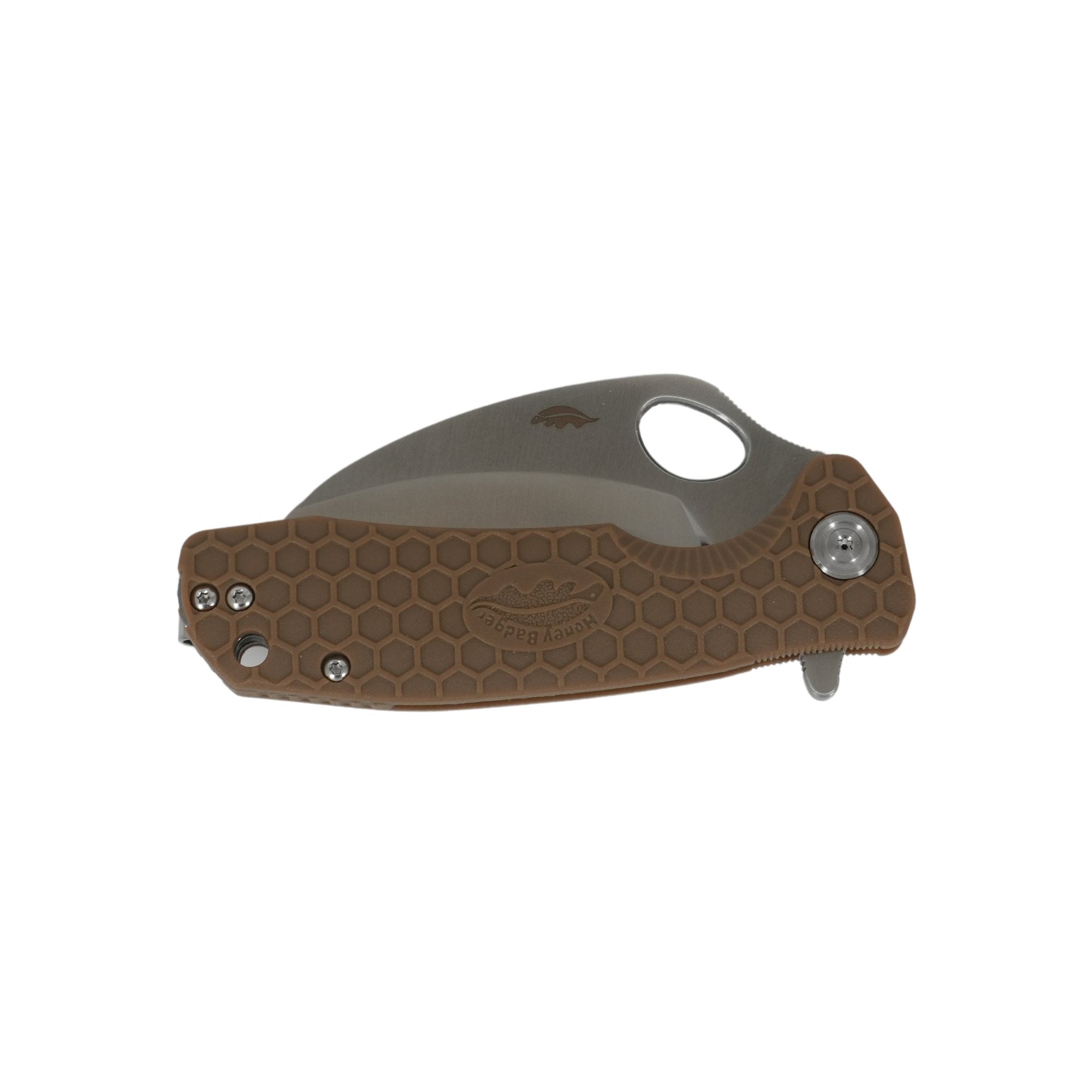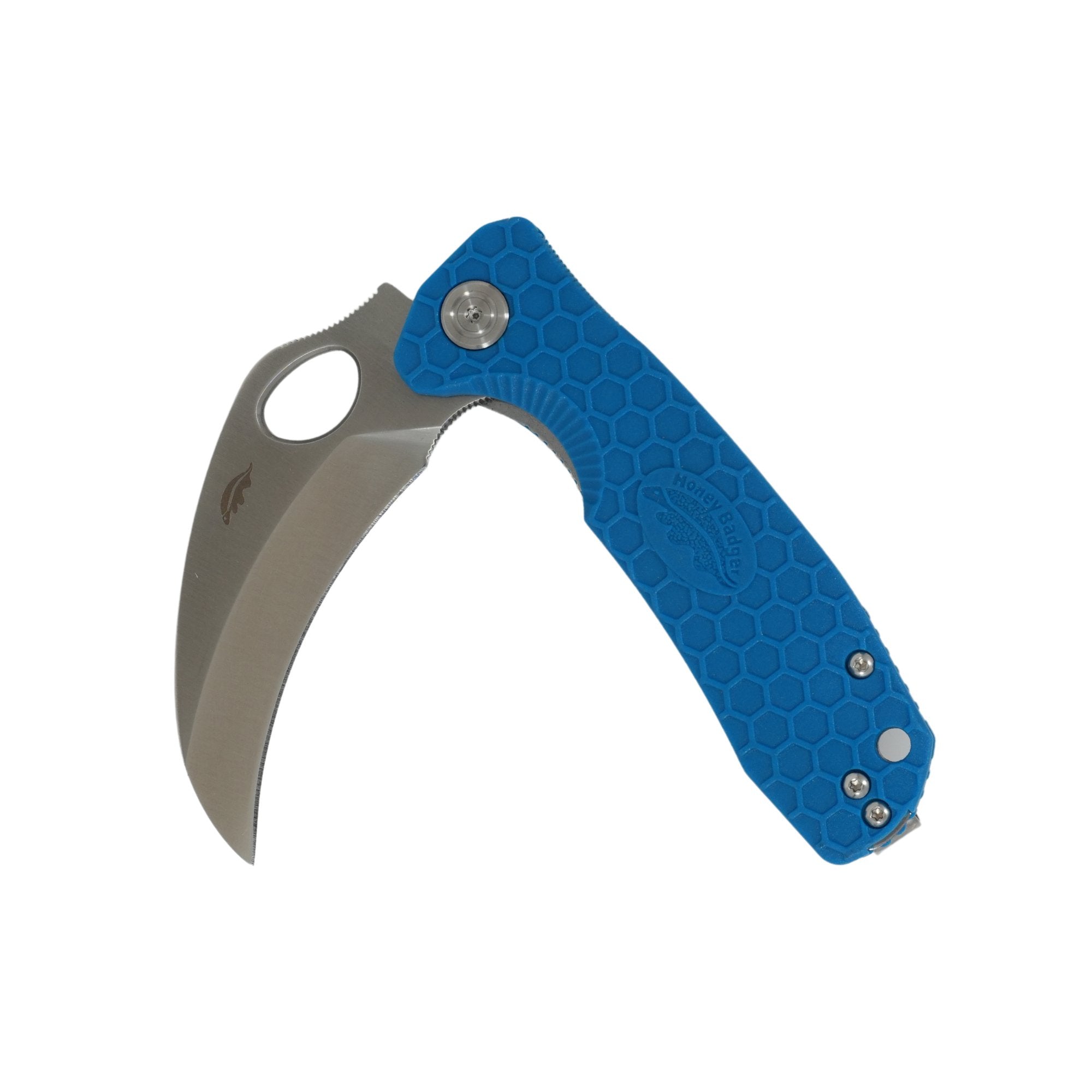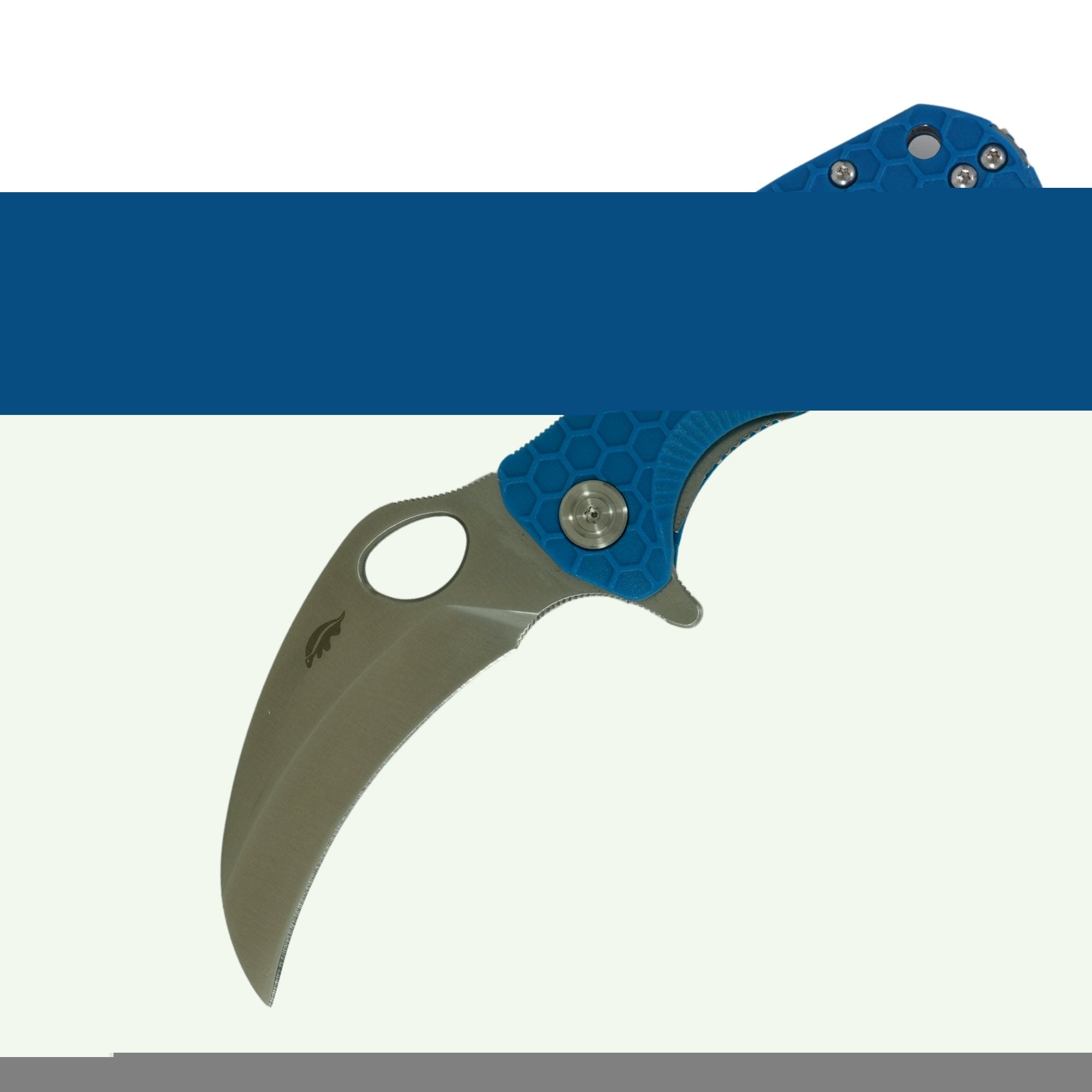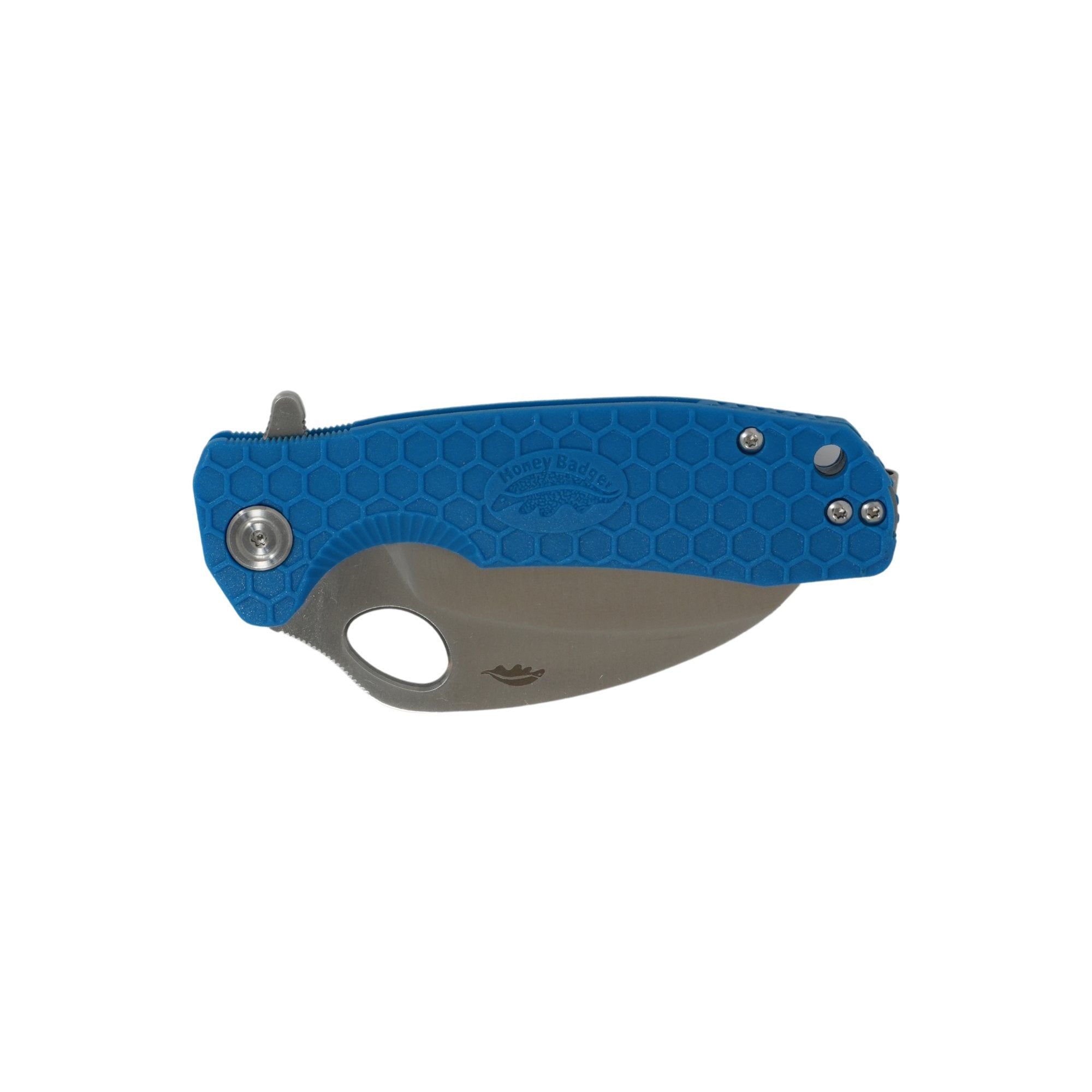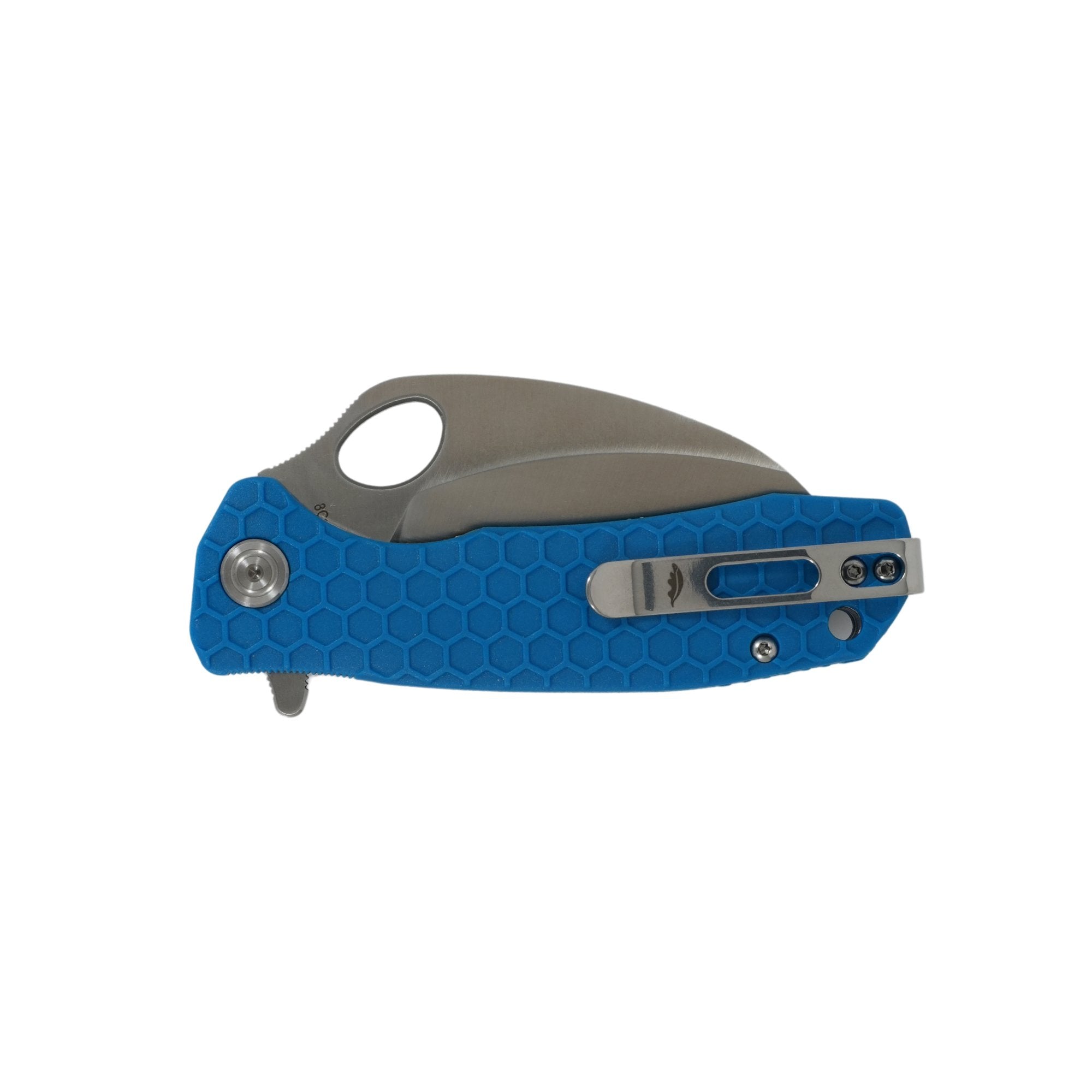Claw Smooth Blade Knives
Claw Smooth Blades, as the name suggests, are knives designed with a blade shape that resembles a claw or talon. These knives are not typically used for traditional cutting or slicing tasks but instead serve specialized purposes. Here are some common types and uses of claw-shaped knives:
- Karambit Knife: The karambit is one of the most well-known claw-shaped knives. It originates from Southeast Asia and features a curved, hook-like blade with a ring at the end for the user's finger. Karambits were originally agricultural tools but are now used as self-defense and martial arts weapons. They are designed for close-quarters combat and can be used for slashing, hooking, and trapping techniques.
- Neck Knife with Claw Blade: Some neck knives, which are small, compact knives worn on a cord around the neck, feature claw-shaped blades. These are often used as backup or self-defense tools and are easy to conceal. The claw shape can assist in controlled cutting and defensive maneuvers.
- Skinner Claw Knife: Skinner claw knives are designed for skinning game animals. They have a claw-like blade shape with a curved belly and a sharp point, which makes them well-suited for precision skinning tasks.
- Fishing Claw Knife: Claw-shaped knives are sometimes used in fishing applications for tasks like scaling and cleaning fish. The curved blade can help in removing scales and cutting through tough fish skin.
- Rescue Claw Knife: Some rescue and emergency tools incorporate a claw-shaped blade for cutting seatbelts, ropes, and webbing quickly. These knives are often used by first responders and in vehicle rescue situations.
- Utility and Tactical Claw Knives: Some tactical and utility knives feature claw-shaped blades that are designed for specific tasks such as cutting straps, opening boxes, or breaking glass. These knives are versatile and can be used in various everyday scenarios.
It's important to note that the design and use of claw-shaped knives can vary widely, and their practicality depends on the specific intended application. The curved and hook-like blade shape can offer advantages in certain situations, but they may not be suitable for general-purpose cutting tasks.


